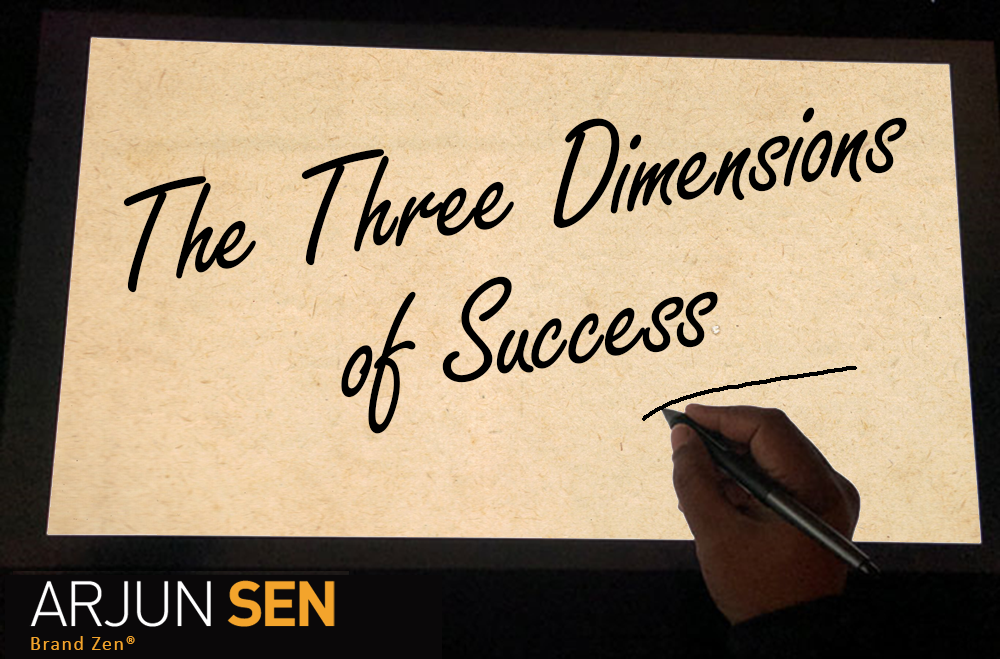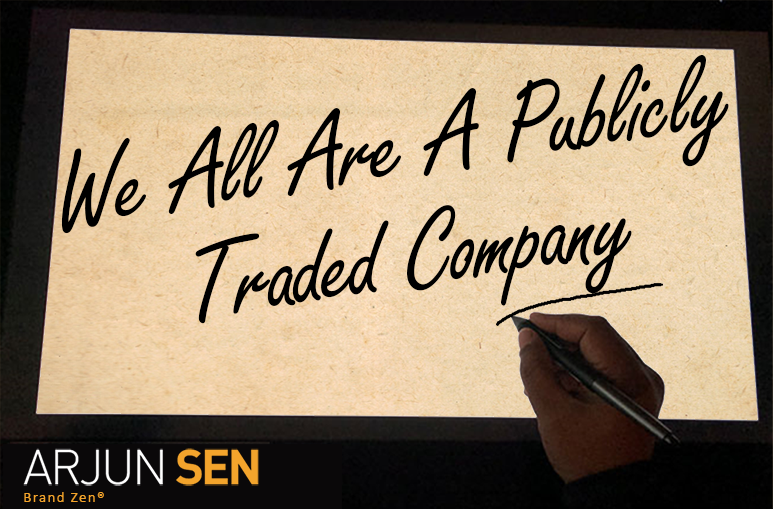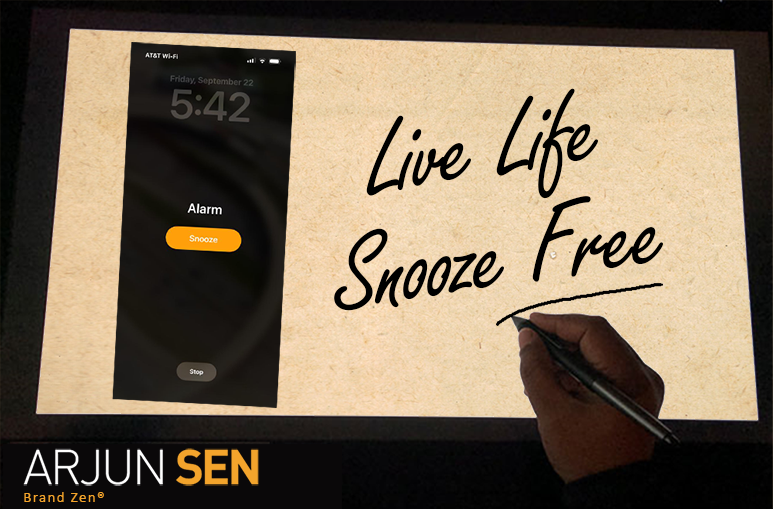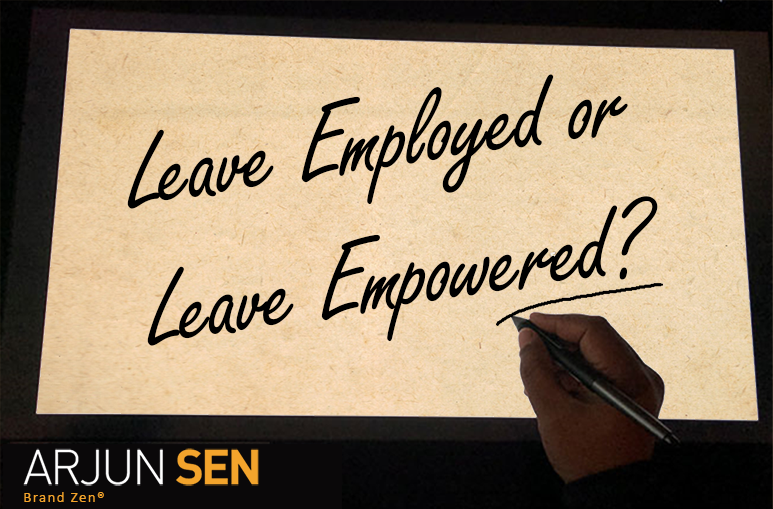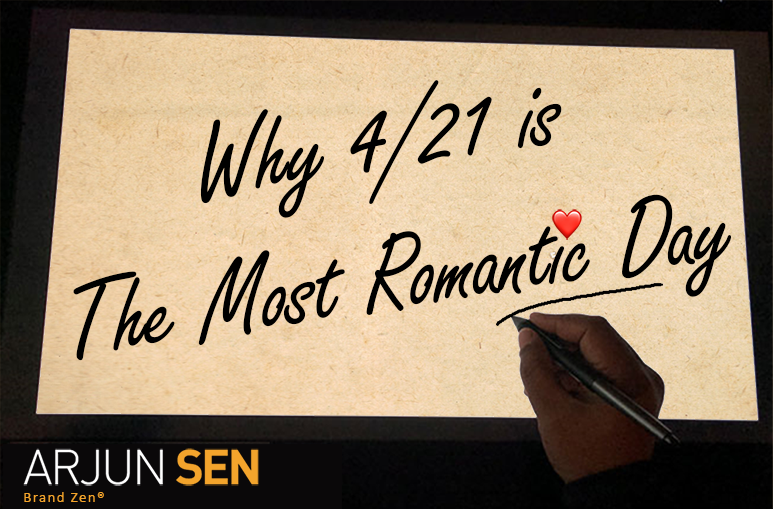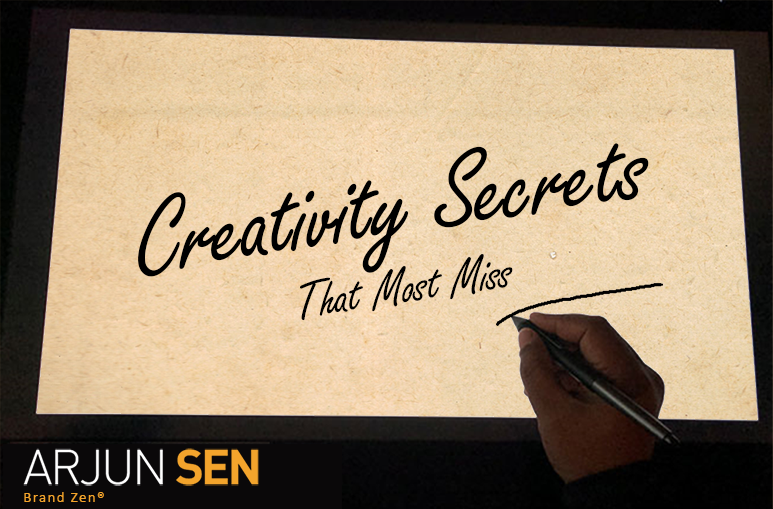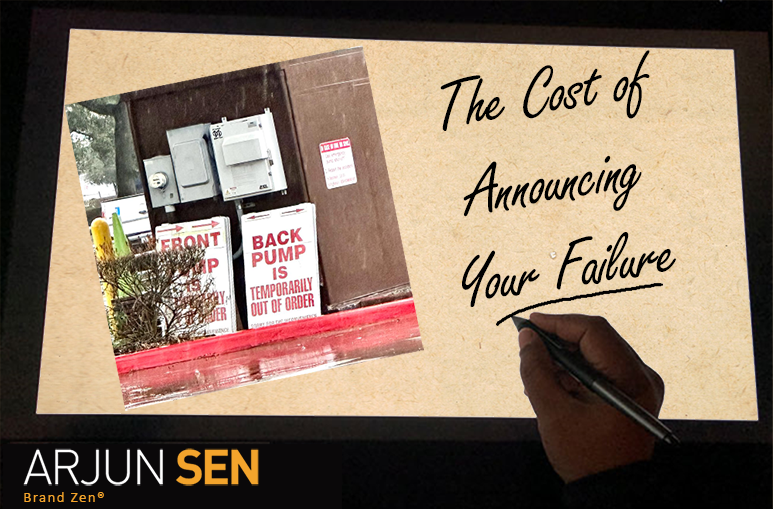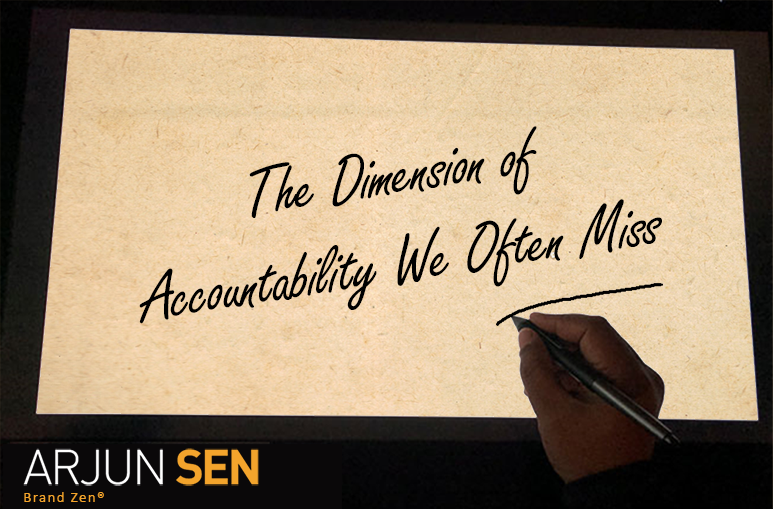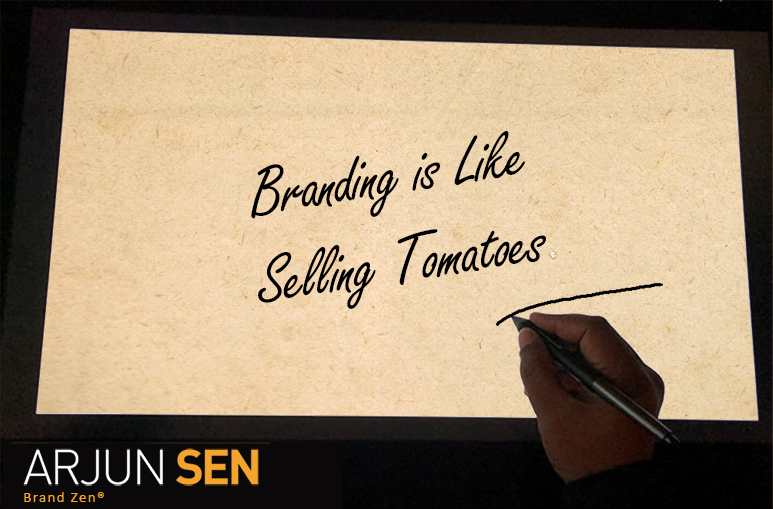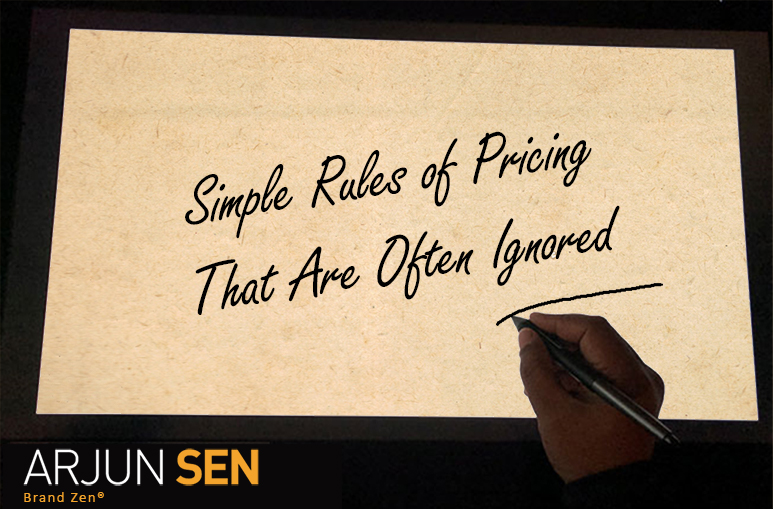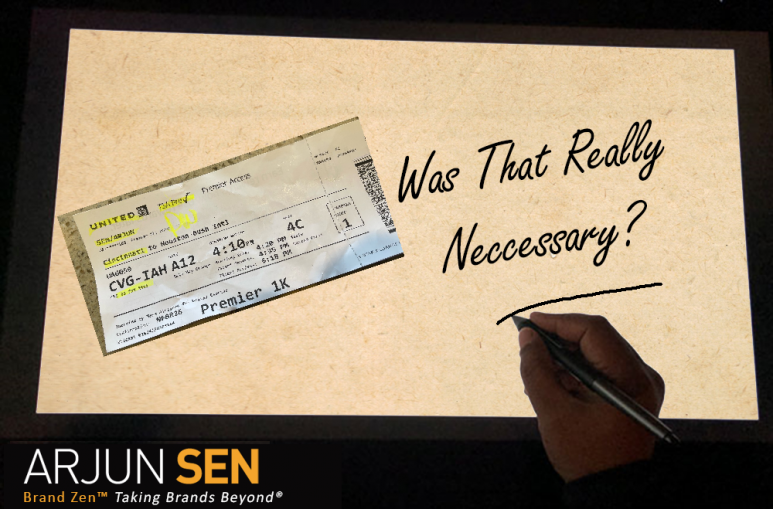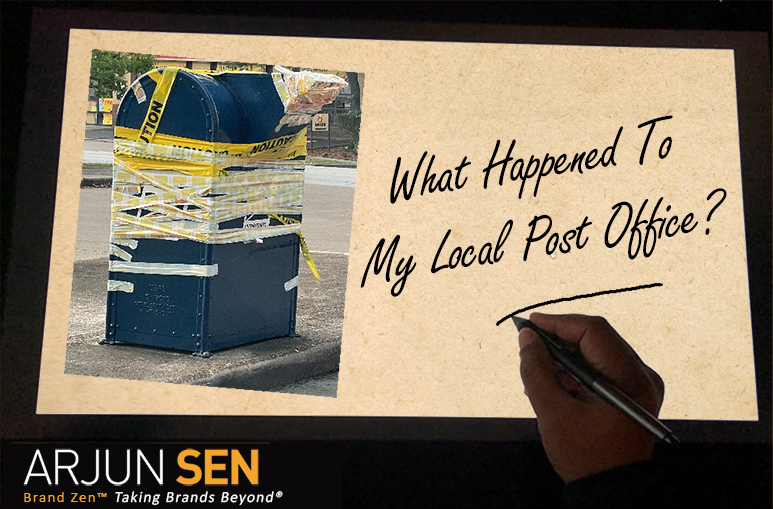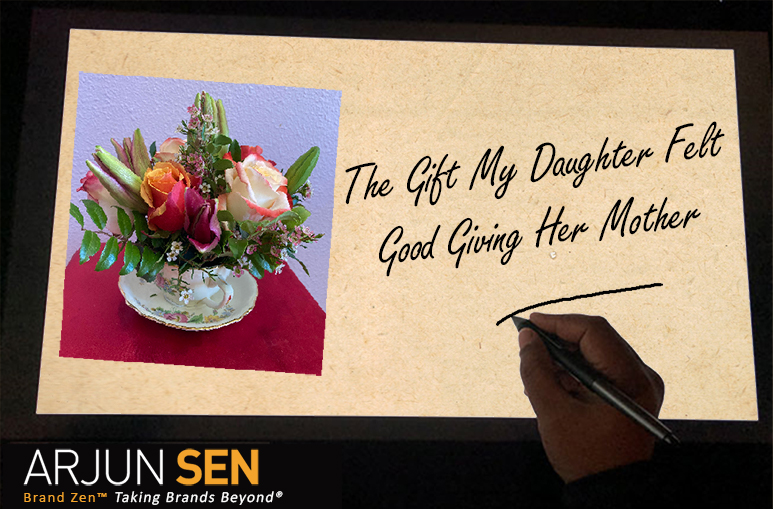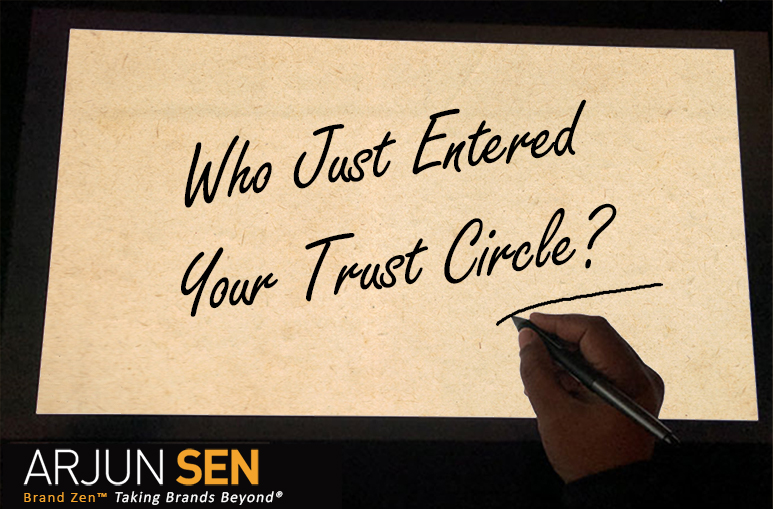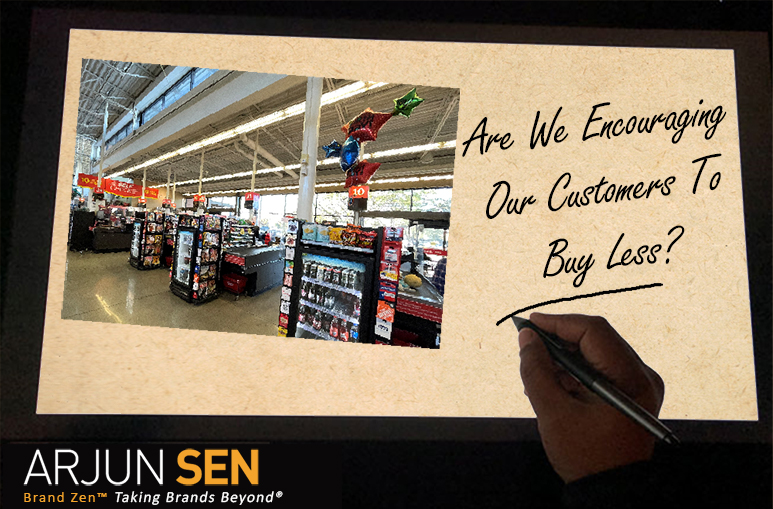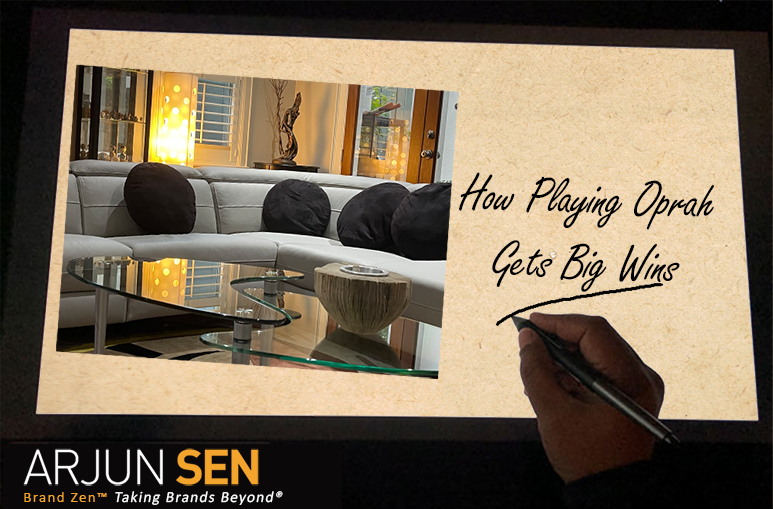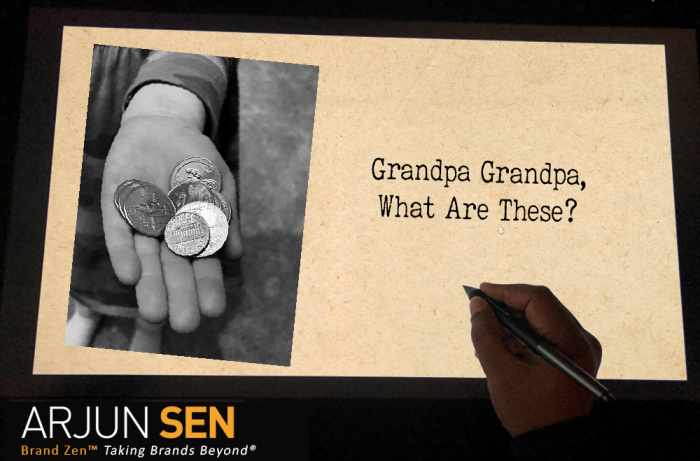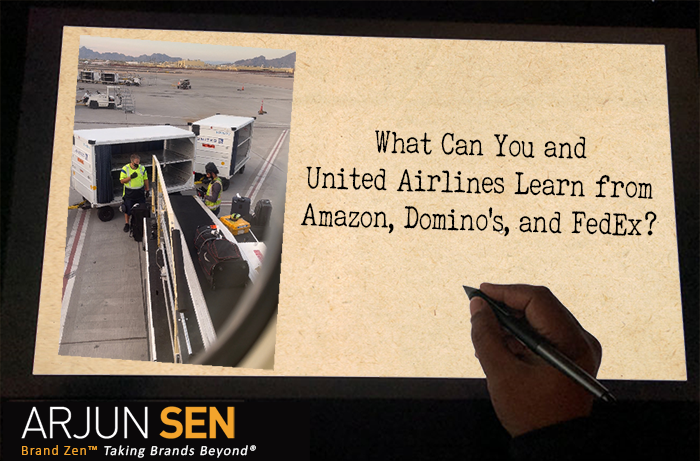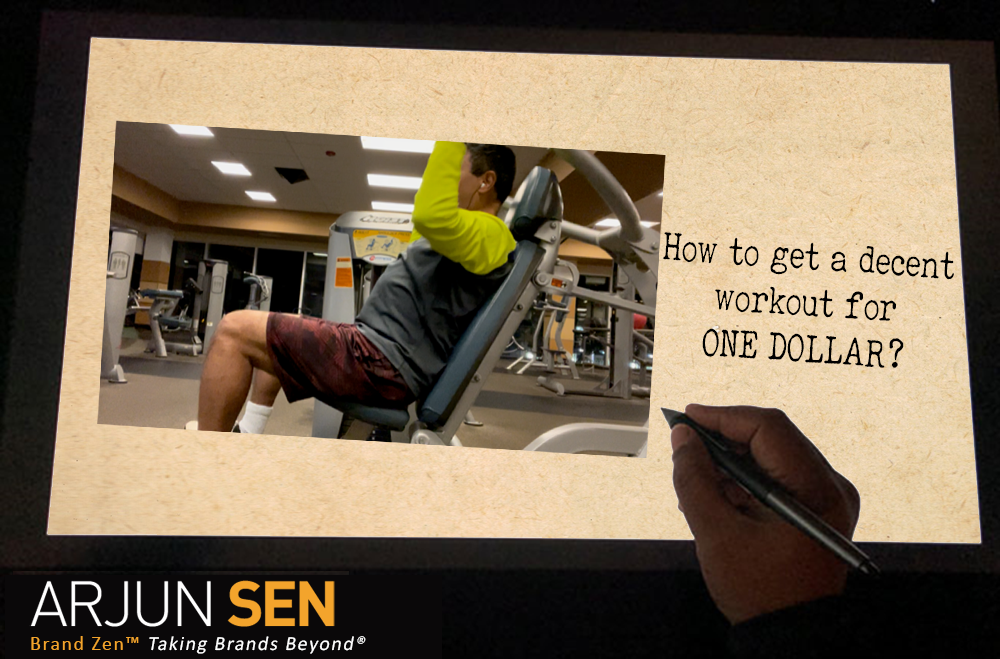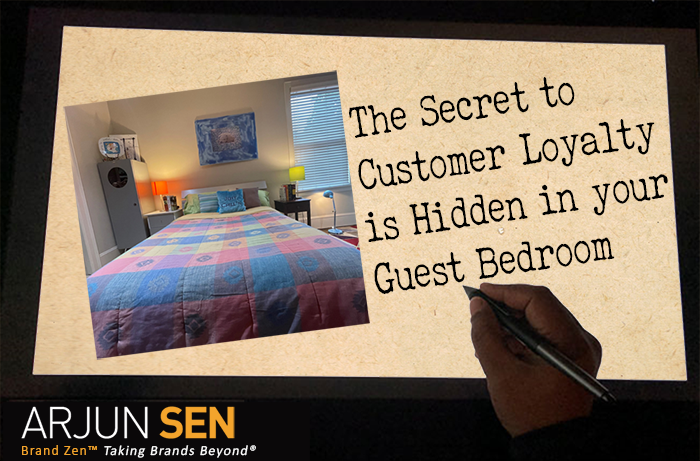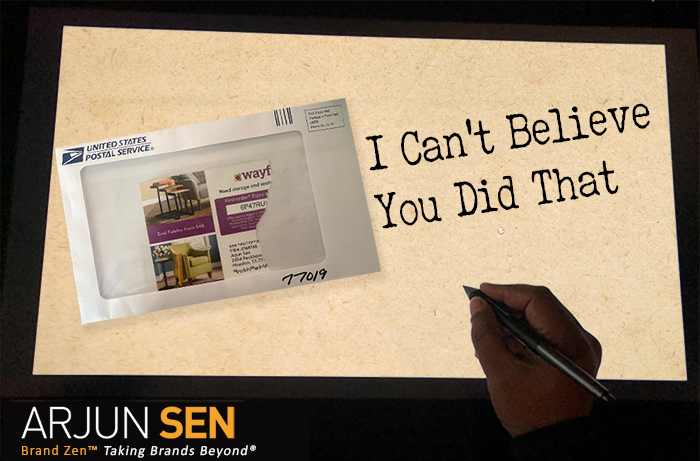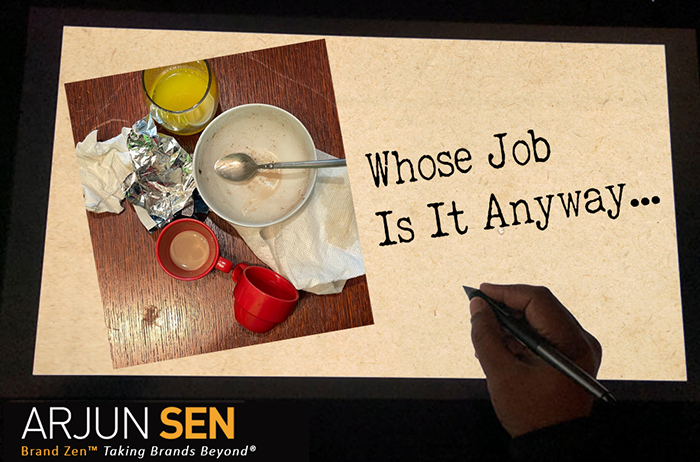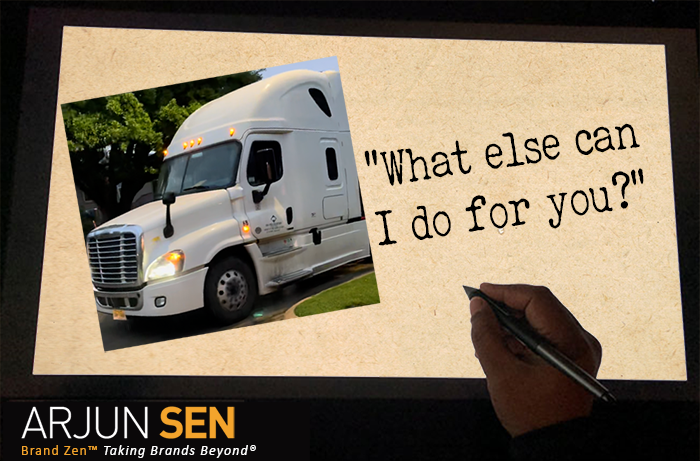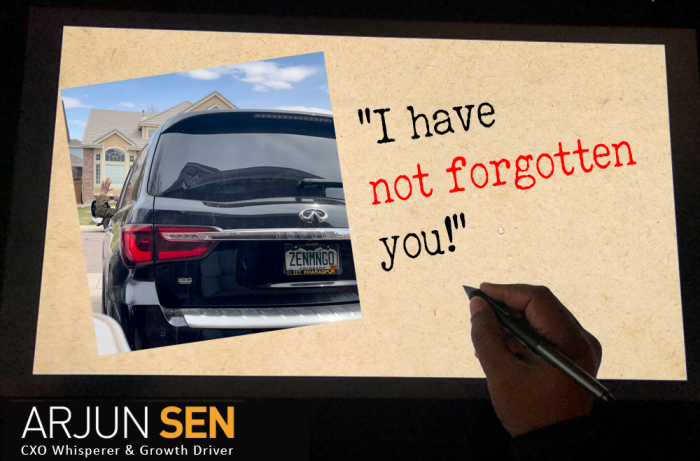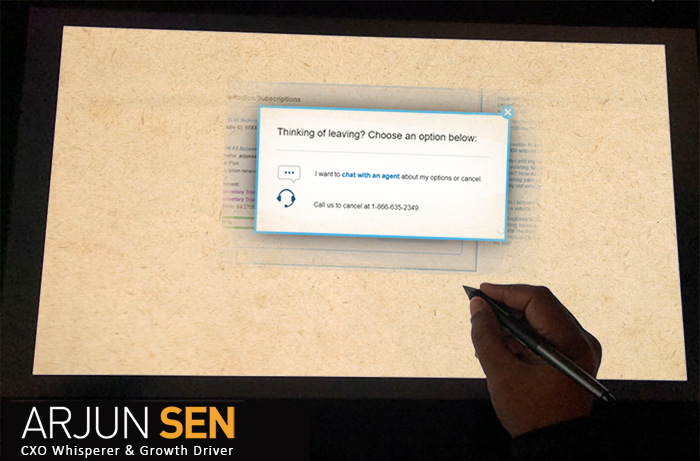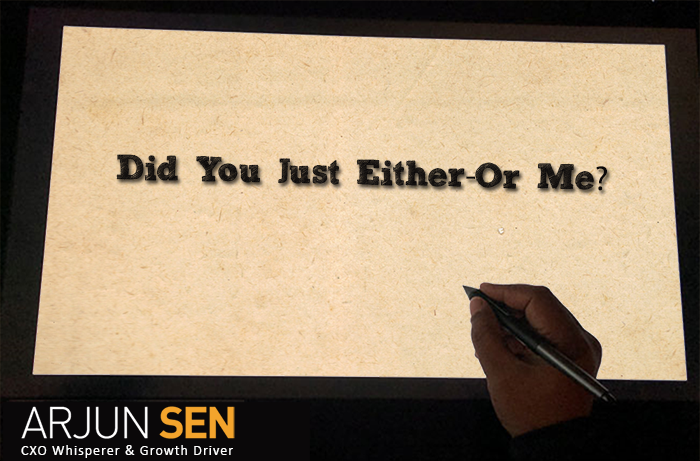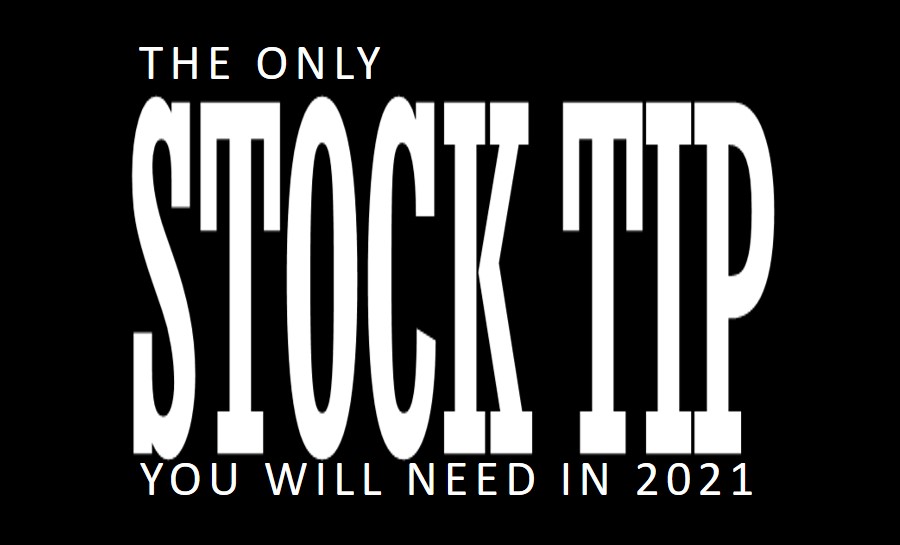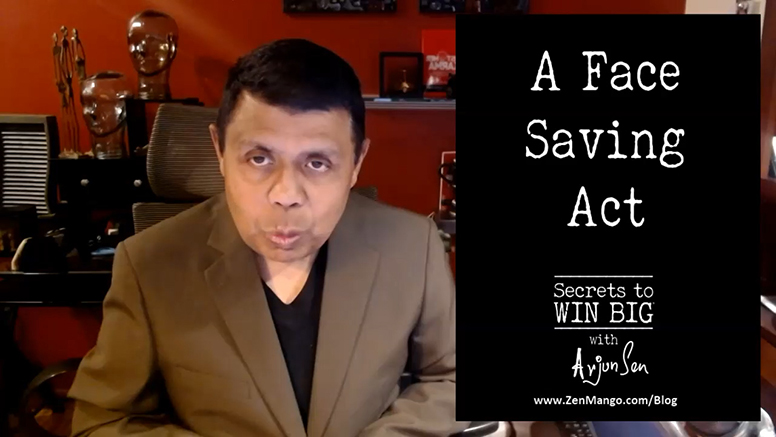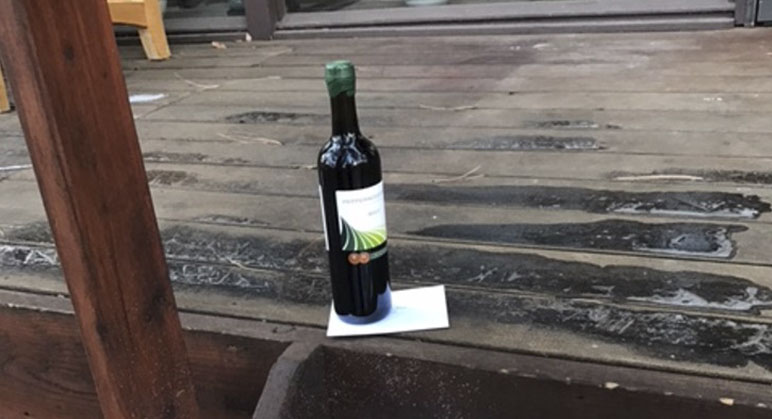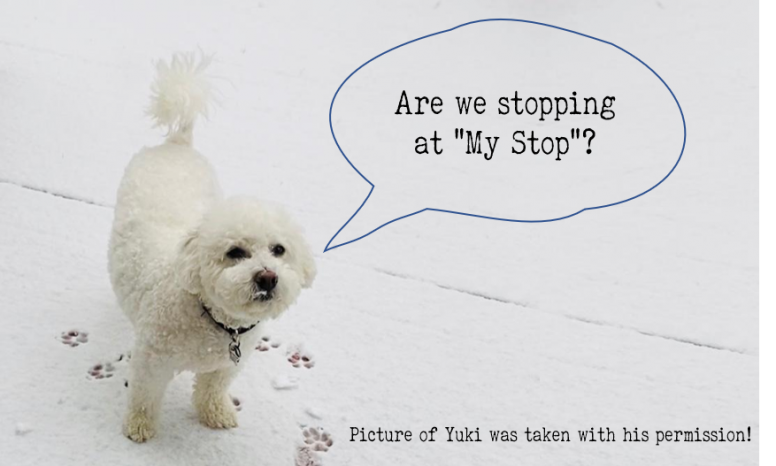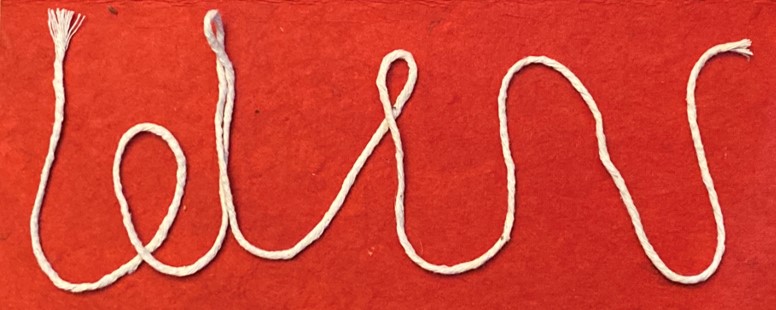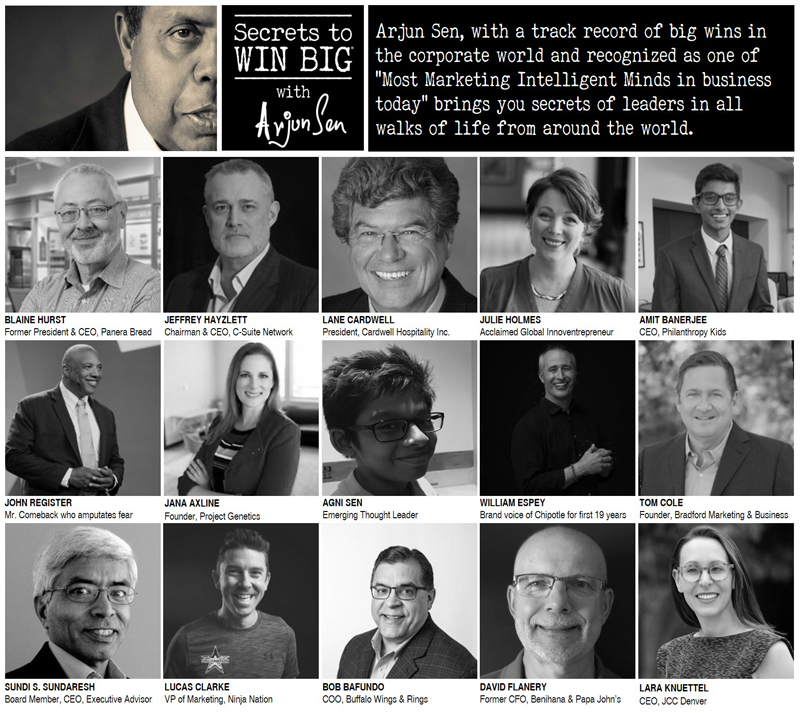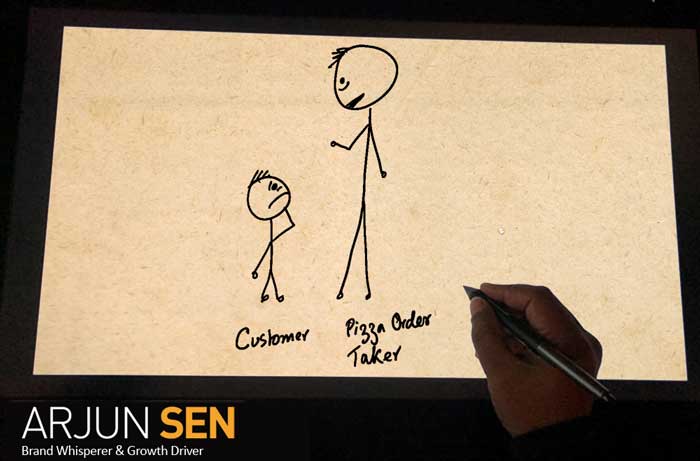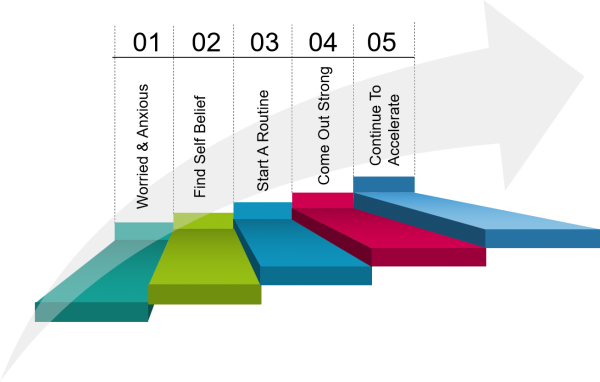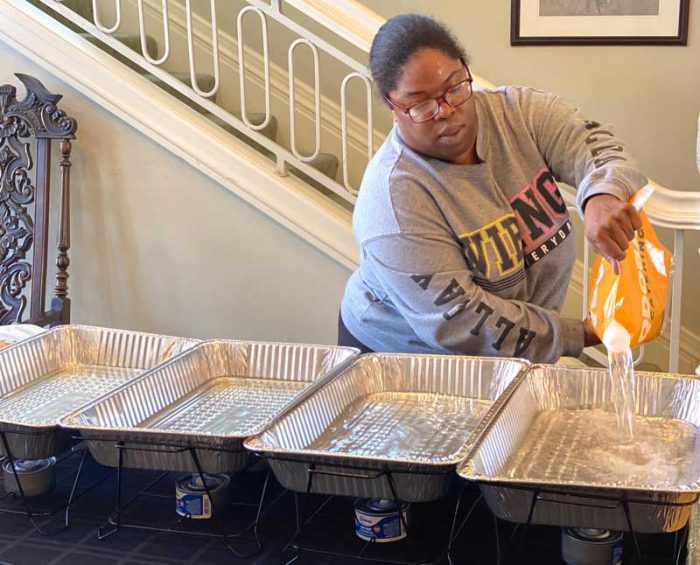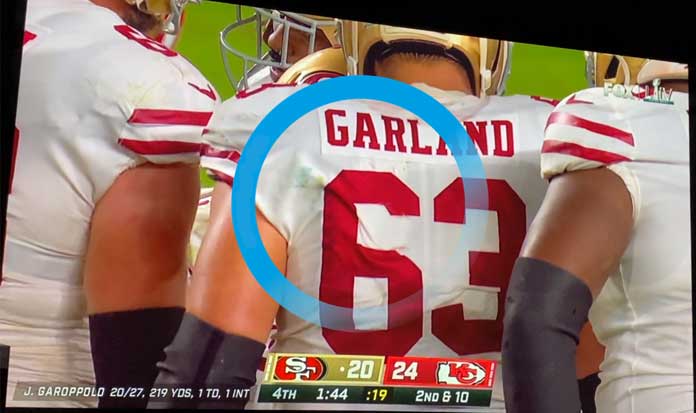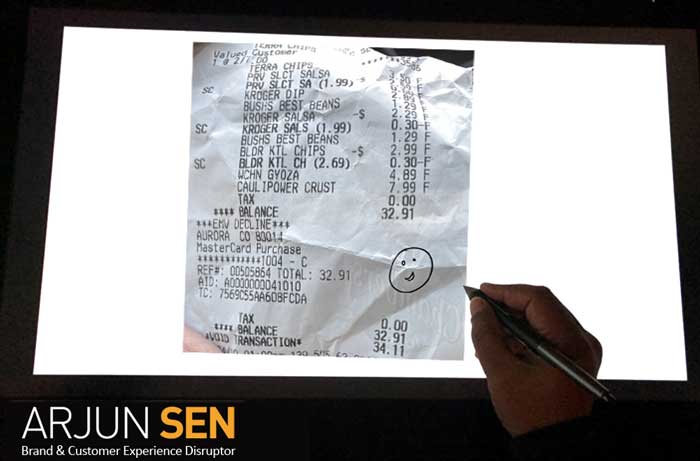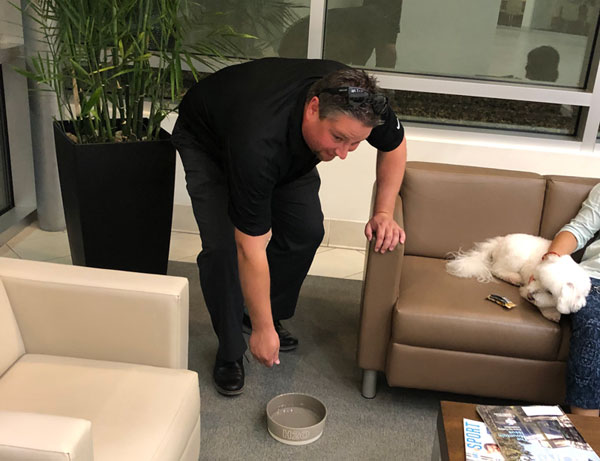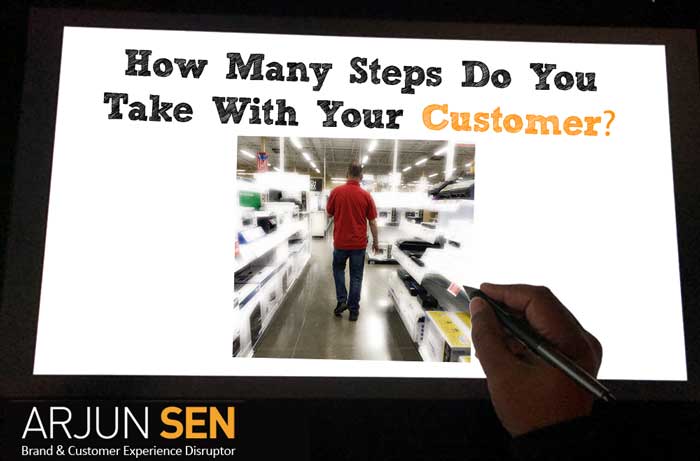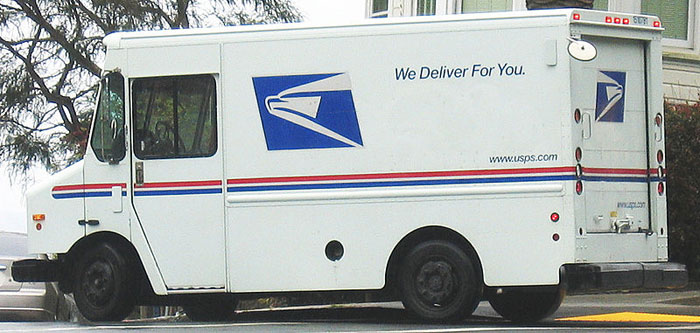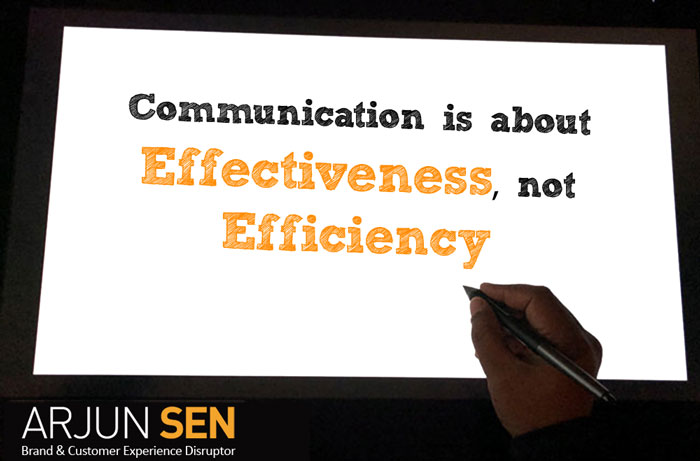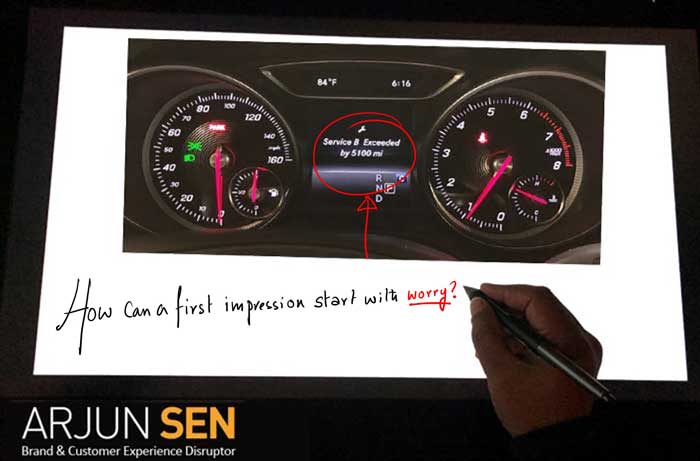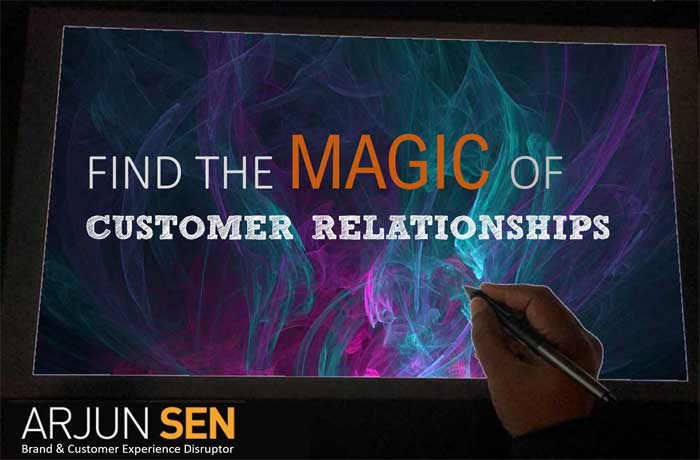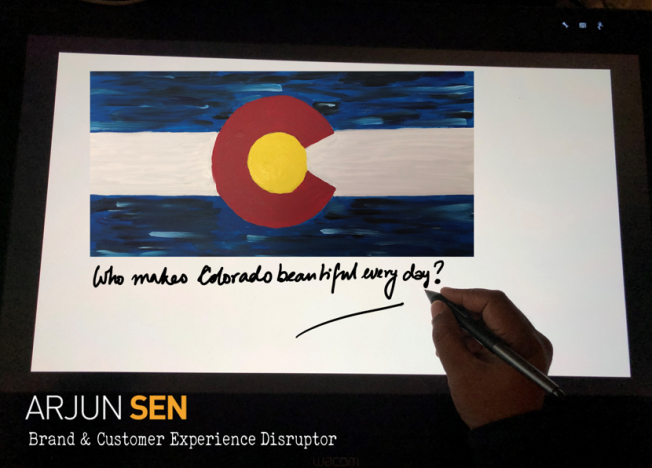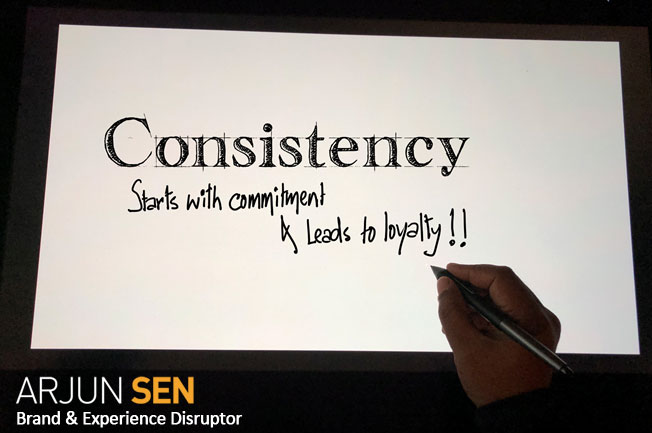Connecting to impact separates us from being one of many and puts us on the path to being one of one....
READ MORE
Be Human, Think Human, Feel Human, Act Human
We are all in the feeling business®
JOIN TO STAY UPDATED
This blog is 100% no selling zone. Subscribe and share for Secrets to Win Big every month.
Our Privacy Policy: We do not share or sell email addresses.
In a connected world, we all have to see the power of our individual brand. We are all individual stocks which are publicly traded with the boards and shareholders. ...
READ MORE“If you snooze, you lose!” holds a lot of truth. Once we start the day as a snoozer (meaning loser), we give up on all opportunities to build momentum throughout the day. ...
READ MOREWe have two choices. You could only do the right thing and leave employed, or take a little risk and go on an unchartered path and leave empowered....
READ MOREEvery brand, every life has a story. All we have to do is to go out and find the story. ...
READ MOREThe path you choose positions you as a “We have a problem” or “we solve problems” mindset and goes a long way to set the tone of your culture....
READ MOREThe path you choose positions you as a “We have a problem” or “we solve problems” mindset and goes a long way to set the tone of your culture....
READ MORELeaders who live accountability at the highest level, operate with the highest level of self-trust and earn everyone’s trust too....
READ MOREInstead of the tomatoes, see the leaves and the vine. Once you see the bigger picture, it will connect on its own with your target customers....
READ MOREPricing is a very intriguing part of any business. Businesses blend the science and art of pricing to get the customer over the final hurdle to say “YES”. But there is a very simple, logical, intuitive side of pricing that often gets ignored....
READ MOREBusinesses today are all creating parallel paths for their customers to access their brand using the digital path. It is not easy to maintain both a traditional and a digital path, but it is essential for both to sync. When they do not sync, it could either be that the digital path is missing key elements or the traditional path is holding on to outdated steps that are not needed anymore. Both are equally important to pay attention to....
READ MOREBusinesses often make the mistake of over-reacting when there is a problem. Do you have a plan on what to do when things go wrong?...
READ MOREViral to me is when a customer feels “I must share the experience” with the world and actually follows through....
READ MOREIt is more important than ever before to have conversations with customers to find out what they love about you....
READ MOREIt is more important than ever before to have conversations with customers to find out what they love about you....
READ MOREIt is more important than ever before to have conversations with customers to find out what they love about you....
READ MOREWhat changes are happening right in front of us and what can your business do to embrace and stay ahead of it?...
READ MOREWhatever business you are in, you can find a way to generate this customer feeling....
READ MOREBusinesses often fall in the trap of communicating price based on how they see it and how they will invoice, instead of pricing it from the point of view of their clients....
READ MOREOnce you walk the path of the customer, feel the pain-points; remedial action to get to a better experience happens nearly automatically....
READ MOREIn any business, failures happen. Identifying likely failure points and having a process to act with care when it happens is essential to winning the hearts of customers....
READ MOREIn any business, every team member wants to feel pride and make a meaningful impact, but they need a clear path to achieve it. To solve for the biggest customer experience challenge for your business, ask yourself three questions....
READ MOREBusinesses often put boundaries on customer deliverables. If they look at a customer connection to be lifetime, and each connection leads to a stronger future connection; then it is easy to see how profitable it is to go above and beyond with every customer, every time....
READ MOREhow to make sure every interaction with the customer is wow, every time....
READ MOREShowing actions every day means you put the relationship above personal gains and that really makes a difference....
READ MOREOnce you see the lifetime connection with a customer and its impact on the business, then EITHER-OR gets easily empowered by GIVE MORE....
READ MOREEach one of us are like publicly traded companies with shareholders owning stocks in the company....
READ MORECustomers seek “PURPOSEFUL Connections” with businesses that are important parts of their life, not their entire life....
READ MOREBig Wins come when you Win Big with every customer, every time. It all starts with SEEING BEYOND™ and CONNECTING TO THE WOW FEELING™ that you want every customer to feel each time....
READ MOREWe are all in the Feeling Business®. Get to know your customers’ every feeling and create the “Wow! How did you know I wanted this?” moment. ...
READ MOREImagine you are one three gas stations off the freeway in a remote location. Your business success depends on what percentage of cars stop & choose you and giving them a reason to buy more than just gas. Instead of leaving it to chance, why not create a compelling reason for your business to be “My Stop” for every car on the freeway....
READ MOREYou can have a box full of beads, but when you find the right thread that connects the beads, you have a bracelet that everyone wants....
READ MOREWorking with top business professionals and sports personalities, I have observed that the Best never stop investing in getting better. That desire to continuously invest to get better puts us on the path to sustained wins. Every time I have met leaders from any field, I always wanted to learn what uniquely makes them successful. This podcast is a direct outcome of that learning and inspiration over the years. Welcome to Secrets to Win Big. Winning is fun but winning big will put you on the path to long term sustained success. I am really excited to share the first three episodes of the podcast to you. They are: Episode 1: Build a Breakthrough Innovation Culture with VIP Guest Blaine Hurst (Part 1) Blaine Hurst, Former President & CEO, Panera Bread Episode 2: Run the Race with Joy with VIP Guest Blaine Hurst (Part 2) Blaine Hurst, Former President & CEO, Panera Bread Episode 3: Drive and Thrive. Not Just Survive. with VIP Guest Jeffrey Hayzlett Jeffrey Hayzlett, Chairman & CEO. C-Suite Network Episode 4: Building a Memorable Brand Voice with VIP Guest William Espey (Coming Thursday 7/23, subscribe below) William Espey, Brand voice of Chipotle for first 19 years Please be ONE OF THE FIRST to Subscribe, Review, and Share the Secrets to Win Big® Podcast (Takes less than 30 seconds): Below are my favorite soundbites from the first set of VIP guests. Please do not forget to like, comment, share, and subscribe to my podcast. Your participation is my true reward for this journey. Please email me at arjun@zenmango.com if you want to recommend someone to be a VIP guest on the podcast. Please note it is totally OK to recommend yourself too. “Leadership is creating a true culture of dissatisfaction. Always feel “We ain’t good enough”” – Blaine Hurst, Former President & CEO, Panera Bread “Be in the mindset of drive & thrive and not just survive” – Jeffrey Hayzlett, Chairman & CEO. C-Suite Network “Seeing the big picture is a lot like using Google maps. Zoom in to see houses and roads but zoom out to see where the roads lead to” – Lane Cardwell, President, Cardwell Hospitality Inc. “Innovation doesn’t always mean creating something new; you can get there by just stretching the old a little” – Julie Holmes, Acclaimed Global Innoventrepreneur “Don’t fall in the trap of staying in brainstorming. Instead, get rapidly to action.” – Amit Banerjee, CEO, Philanthropy Kids “Do not be satisfied with ripples that go outward. Create echoes which come back.” – John Register, Mr. Comeback who amputates fear “Always move forward however slow it may seem” – Jana Axline, Founder & Chief Project Officer, Project Genetics “Every small motion which is complicated, when you combine, becomes the overall activity” – Agni Sen, Emerging Thought Leader “Brands start with clear values. Values lead to a culture of people. External manifestation of culture is your brand voice.” – William Espey, Brand voice of Chipotle for the first 19 years “Always ask for feedback. Never close the door to get better” – Tom Cole, Founder, Bradford Marketing & Business transformation leader “Be calm. It is the mindset that will help you see the path ahead better” – Sundi Sundaresh, Board Member, CEO, Executive Advisor “Fail forward and fail enough times to be able to grow past that” – Lucas Clarke, VP of Marketing, Ninja Nation “Live people first always; It’s not just words, but actions that matter” – Bob Bafundo, COO, Buffalo Wings & Rings “Learning what does not work is never a waste of time” – David Flanery, Former CFO Benihana & Papa John’s “For the world to take a chance on you, start by believing in yourself” – Lara Knuettel, CEO, JCC Denver Here are four reasons that make this podcast a must listen: Hear it straight from global leaders In this podcast you will hear from leaders from around the world and all walks of life, sharing their secrets. These are leaders who have wowed me with their way of thinking and putting their thoughts into action. Secrets from leaders with different points of view We are all different, and our individual leadership journey is different for each one of us. This podcast celebrates the different paths different leaders take to win. It shows that there is not one universal profile for a leader, and one path to win. In the first fifteen episodes, you will hear secrets from leaders from all over the world, all ages, and different areas of life. The leaders share their own unique thoughts and soundbites. Importance of soundbites from leaders Often you may not have time to immediately listen to an entire podcast, but need insight nuggets to nudge you forward. Those are times the soundbites and one-liners will give you a quick “spot of inspiration.” Inside story behind the half-face graphic I have the best seat in the house to facilitate content from VIP guests and bring you unique perspectives. The half-face graphic is to stay true to the vision of the podcast; guest driven insights. Subscribe to the Secrets to Win Podcast: ...
READ MOREFor any branding project the journey starts with a clear vision of the finish line. Five years ago, on a June morning, I started dreaming of an initiative to create a global digital space where there is only good news. That journey became real only a year back when I finally saw the finish line for the initiative. The vision was about a family with kids, sitting in front of a screen and looking engrossed at a world map. They had big smiles on their face as every few seconds a new story of kindness and good deed from some corner of the world was popping up. Today that vision has become a reality and I am excited to invite you to the 311 Challenge for a better world. All of us together are responsible for our world and the site gives all of us an opportunity to make it better. The 311 Challenge for a better a world challenges everyone to act, as every action makes a difference. The language of the website is family suitable to fulfil the vision. The site does not allow any inappropriate language as our partners at Prama integrated an AI based algorithm to prevent posts that violate the policy. The site is a zero-commercial zone. We respect everyone’s privacy 100% as a log-in is not needed to post a story. Please join me in taking the 311 Challenge by going to www.311challenge.com. Please share it with friends and family. I am personally looking forward to experiencing the magic with my family as stories of kindness and good deeds from all corners of the world pop up. What is it? 3 CONNECT with three people. Reach out to a friend or a family member who you have not been in touch with. Share a smile, say something nice and encouraging; create a mini moment. 1 BRIGHTEN someone’s day. Go above and beyond to help someone. Take some time to do a simple act of thoughtfulness that will make a big impact in the person’s life. 1 DO SOMETHING NICE for yourself. Celebrate you. Take a moment to be proud of who you are and do something nice. Even pausing and asking for help is a great way to show you care about yourself. Then visit www.311challenge.com to celebrate and share your story with others. You can do it daily, weekly or monthly. Once you complete the 3-1-1 challenge, please share your stories of brightening the world so that others around the world feel good reading it. JOIN TO STAY UPDATED This blog is a 100% no selling zone. Subscribe and share for Secrets to Win Big every month. Our Privacy Policy: We do not share or sell email addresses....
READ MOREThe year was 1999. Yes, we used to order pizza by calling the store directly and the average hold time was 45 minutes, especially on Friday evenings. While on hold, if the call got dropped then the customer had to start all over again. Finally, when the time came to talk to the order taker, most customers did not have a menu in front of them and relied on either past orders or suggestions from the order taker. All pizza companies had similar long wait times and some were looking at how to make the wait time more “pleasant” by adding better on-hold music, some were thinking of going to a national 1-800 call center to take the orders. They were all great ideas but it only made a really bad situation a tad less bad. At Papa John’s, we drew an illustration to show how customers felt. They felt anxious, helpless and in total lack of power. It felt like the order taker had removed all the power. The illustration helped us realize that “a tad less” bad solution was not good enough as businesses cannot win by making their customers feel powerless. That realization put the team in pursuit of the big win, to replace phone ordering completely and this resulted in Papa John’s building the first ever online ordering system. A big win that resulted in a billion dollar business, and the drive came from the illustration that did not allow us to forget how customers felt. The illustration at Papa John’s helped us feel the magnitude of pain of our customers. Businesses must feel customer pains as that feeling will drive big wins. Once a business feels the magnitude of pain of the customers, there is no denial or going back; there is no stopping until you remove the pain completely. Big wins comes from turning the pain point into a wow moment. How Do Your Customers Feel? Today in 2020, the illustration is still relevant to every business, every day. Businesses often focus simply on the highs and not the lows. Even the best experience delivered with a low point leaves a negative after taste. Businesses must have clarity of customers feelings at different points of their experience. Are there any experience points where customers feel helpless and in total lack of control? Focusing on those experience points may open the path to big wins. Just remember, behind every problem lies a big opportunity. Here are a few thought starters to help you think of what you can do in your business: Retail: Why do they have only person at the return desk while there are 15 checkout stands open? Shouldn’t they consider self-return? If customers buy using self-pay, should they not return that item at a self-return counter? That way customers can buy with more mental peace knowing how easy it is to return the product if they are not satisfied. Medical Office: When patients walk in, they wait to check-in. Then they wait in the lobby until their name is called. Then they go to a secondary solitary wait area where the nurse takes their vitals. Then they wait again. Being a patient does not mean their patience must be tested. Why not offer patients the options to wait in the car or at the coffee shop, where they will get a text when it is their time to walk-in. Why not offer self-vital measurement stations to empower them to take charge of their own health? Why not go a step beyond where the patients can record a voice memo of their concerns at the comfort of their home and AI tools summarize it for the doctor? Imagine a world where doctors walk in totally aware of the concerns and immediately start getting into details of the problem? The patient will truly feel like a valued customer. Big solutions come from not making the pain a tad less but finding a customer win to reverse the pain. STEPS TO IDENTIFY HOW YOUR CUSTOMERS FEEL AT EVERY EXPERIENCE POINT: BE A CUSTOMER: Experience the path a customer takes PAUSE at every experience point DOCUMENT every feeling Next ADD everything that can go wrong scenario A day later REFLECT on all the feelings: Celebrate the positives Ask WHY NOT for every negative feeling and find the big opportunity JOIN TO STAY UPDATED This blog is a 100% no selling zone. Subscribe and share for Secrets to Win Big every month. Our Privacy Policy: We do not share or sell email addresses....
READ MOREThis current period of uncertainty was unforeseen. The layering of serious worries about health and economy is simply overwhelming. To make matters worse, none of us have a playbook to use during these times. We should not live in denial, but we must also believe that each one of us has what it takes to overcome and come out strong. To get out of the current state of shock it is important to first get into a positive and constructive mindset. (Of course, that is easier said than done). There are five evolving stages that we all must go through. This will get us ready to win big when things start becoming normal. These are just thought starters, and each of us should add our own ideas to make the perfect personal road-map. I request all of you to commit to ONE action at the end: Please reach out to a few people and help them to get through this period. It will make a big difference. I know, if you sent me any thoughts, advice, or a note; that will pump me up. The 5 stages: WORRIED & ANXIOUS: This is where most of us have been when the crisis began. It is natural to feel overwhelmed in the middle of a major uncertainty. Staying here will not help us and we need to find a way out of this. FIND SELF BELIEF: The first step out of worries and anxiety must be driven by mental strength. We must look back and think of all the difficult situations in life we have navigated through. Being proud of every past accomplishment will make us realize that all those past wins got us ready for this big challenge. It starts with believing that we will survive through this and commit to doing whatever it takes to come out a winner. When I need a little boost, I love to listen to this rendering of Pete Seeger – We shall overcome. I may be a little dated and my Facebook friends shared two more recent songs IAMLXGEND and Macklemore’s Glorious START A ROUTINE: Routines are the easiest way to get into an action mode and remain there. Our daily routine during this period should be purposeful and focused to make us best prepared for BIG success when this is over. Once we start to act regularly, the momentum will tip in each of our favor. COME OUT STRONG: When the world reopens, we must be ready to come out of the gates running. There will be a lot of competition at that point, and those who are most prepared to get a jump start, will have odds in their favor to start winning immediately. We must remember that it will take the strongest boldest effort from each one of us, but nothing to worry about as we all have it inside of us. This is my personal cheer song that gives me goosebumps every time I listen to this Des’ree song CONTINUE TO ACCELERATE: A good start is what it will take at the beginning, but that will not be enough. We will need to keep accelerating to build the momentum and sustain our wins. Once we are aware of these 5 stages, here are the three questions each one of us must answer: Which stage am I in? What one action can I take to get to the next stage? Who all can I help to move ahead in their journey? SHARING WITH GRATITUDE: Each one of you have been amazing friends and collaborators. I am grateful to each of you for every connection, help, advice, and guidance. To celebrate our connection, I am sharing with you some ideas and resources that you might find useful and fun during this period. Thank you! PERSONAL BRANDING FREE WEBINAR (More details to come): Each one of you is a brand! It is your perception that defines you. If you do not manage your perception, external factors will manage it for you. In this 90-minute webinar, you will leave with three things you need to unleash your personal brand: A MINDSET CHANGE to see the value and benefits A FRAMEWORK to add your content and be purposeful A PROCESS to build and sustain HOW TO LOOK PROFESSIONAL ON A WEB CONFERENCE CALL: This LinkedIn post is a simple game to ‘Discover the Difference’. It will open your mind to things you can do to create a professional image in your next virtual meeting. Please check the video of how Late Night hosts are taking their show virtual. RESTAURANT TAKE-OUT: 7 Ways to make your take-out offering more relevant in current times. HOW TO CORONAVIRUS-PROOF YOUR HOME By Scottie Andrew, CNN: I found this to be a very useful resource to print and share with neighbors. JOIN TO STAY UPDATED There is no selling, just cool insights every month. Our Privacy Policy: We do not share or sell email addresses....
READ MOREI had ordered catered lunch from a national fast casual chain for a business meeting. At exactly 11:30 AM Tamesha walked and immediately started setting up the catering chafing dishes for the hot food. She lit the burners and picked up a container full of water. In my effort to be helpful I said “Next time, you can fill the water from here; that way you do not have to carry the water with you.” Tamesha said “No sir, this is not just any water. This is hot water. With hot water, the hot food stays hot. Otherwise the cold water will get hot as the hot food gets cold.” It took me a second to realize that what she said was brilliant. I was in total admiration for her and the restaurant chain. Once I realized how far this restaurant would go to keep the food hot, I asked myself, “What else will they do to that is impressive?” What Is Your Equivalent Of Hot Water? When a business creates a WOW moment for the smallest area of guest experience, it creates a positive halo for the brand. If that WOW happens early, the rest of the experience automatically gets uplifted. Imagine on a hot summer day, when the temperature is 110 degrees, you are picking up a rental car. As you leave the rental counter, they offer you a chilled bottle of water. Next you check into your hotel, and you find a personal welcome card with some refreshments. Finally, you get to a department store looking for an item and realize they do not have it in stock. But their service desk offers to get it delivered to your hotel room in an hour. In each of these three cases, the businesses going above and beyond will create WOW moments for you and create a positive halo for the brand. The opposite of this can drop the brand’s perception in your mind. If you get into your rental car and see that it was not clean; or you drag your suitcases to your room in the hotel to realize the keys do not work; or the department store asks you to call the other locations to check if they have the item in stock; each of them are a negative way to start the experience. It is very tough for a business to recover from that. Hence, WOW moments early in the experience is essential to create positive brand experience. Steps To Find Your WOW Moment: SEE every experience element from your customer’s P.O.V. UNDERSTAND the role of each element in the total experience DEVELOP a plan for each element to optimized FOCUS on consistently delivering every element of the experience...
READ MOREOn Super Bowl Sunday at 8:00 pm, with the 49ers down by 4 points and attempting a comeback, something strange happened on my TV screen. The screen froze, it had stopped streaming. I waited for a few minutes and then called my internet provider. Jack got all my information and then informed me that Sundays at 8:00 pm they often have “routine maintenance shut down”. Really, on Super Bowl night? “I guess someone forgot to adjust for that” was Jack’s answer. He said sorry, but it did not matter as I missed the last few minutes of one of the most exciting Super Bowl games because someone “forgot to adjust”. I completely understand that Sunday evenings is a perfect time for routine maintenance. But, with nearly 50% of the population now moved to live streaming, shouldn’t they adjust downtime for all major live events like the Super Bowl, Oscars, Grammys, and other high demand events? Shouldn’t the internet providers understand that we are putting our entire trust on them? When Is The Right Time For Maintenance? Any business must have a clear idea what role they play in the life of the customer. In the case of internet providers, they are becoming the main artery for communication and live entertainment. That puts them at a much higher level of responsibility. Before, when they were only offering online communication services, they could do routine maintenance on Sunday evening. Now, with businesses evolving, they need to find new time slots for maintenance when customers do not need them. This is true for all businesses. Retail store employees trying to take care of inventory 15 minutes before closing may be efficient, but not customer centric. Instead, they need to look out for customers who rushed to beat the closing time and assist them. Restaurant staff starting to vacuum the floors with customers still dining is another example of that. In all cases, attending to the needs of the customer comes first and all maintenance should happen when they do not need the brand. 3 Steps To Planning Downtime (Maintenance): Have clarity on WHY customers need us Clearly identify WHEN customers need us Finally, schedule maintenance during customer downtime (when they do not need us)...
READ MOREIt was Christmas Eve. I was at the local grocery store trying to pick-up last-minute items before the store closed at 6 PM. The lines were long and there were store employees everywhere, assisting customers. When a self-checkout counter opened, I quickly walked up, scanned my items and inserted my credit card. The screen displayed “Credit Card Error”. I tried again and after three attempts I had a helpless look on my face. One of the store employees noticed my frustration, walked up to me and took charge. She printed the receipt and drew a smiley face on it. Then she handed the receipt to me, smiled and whispered to me, “This one is on us. Our credit card processing is down. Enjoy! And please don’t tell anyone else.” I was not sure what just happened. As I walked out with my groceries, my reaction was, “You cannot do that at a grocery store!” Then I realized how thoughtful the stores action was. With the credit card processing being down they could have easily put signs up for “Cash only” payment. That would have created total confusion among customers as not everyone carries cash. Or they could have closed the store. Instead they understood that being a good neighbor, they needed to be there for their customers on Christmas Eve. Wow! Simply Wow! What You Do When Things Don’t Go Right Defines You Technology and processes do not always work as planned. What do you do when things fail? In this case the grocery store clearly understood the business they are in; to be there for last minute shoppers on Christmas Eve. When there was a technology failure, they did not to pass the consequence on to the customers. Instead they stayed true to their reason to exist. What was even more amazing was how they did it. They did not create a chaos in the store and added stress to their customer. They added extra employees to communicate with each customer individually. They made sure every customer left the store happy with what they needed. I feel that the stores’ actions were planned as they seemed to know what to do in case of an emergency. Their plan and action saved Christmas for each customer, one at a time. Putting customer’s first with a smile during a problem shows a brand’s character and true commitment. Those are moments that define a brand and create positive feelings that last forever. 3 Steps To Prepare For The Big Failure: Clearly know what business you’re in Identify what all can go wrong Develop action plans in alignment with your brand promise...
READ MOREWhat is the equivalent of the doggy bowl in your business? What is the one thing that will make customers feel “These are the kind of people I want to do business with.”?...
READ MORELast week, I was getting ready for a client presentation when I realized that I forgot to bring markers. I took an Uber to the nearest office supply store and asked Jeff, the first person I saw in the store, for help. He said the three magic words, “Follow me please!”...
READ MOREIsn’t the role of a mail carrier to deliver the mail? This year my daughter Raka had sent me some golf balls with a custom message for Father’s Day. The day the golf balls arrived; the mail carrier had put the box in my mailbox. They had truly delivered the mail as the box was forced all the way in my mailbox. I tried to get the box out for a few minutes, and then I realized that there was no way I could pull the box out. As the box contained only golf balls, I started ripping the packaging to get the balls out. Soon the balls were out and I was in an “awwww” zone when I read the message on the balls, “Cool Golfer, Cooler Dad.” Once I was able to get all of the box out, I found hidden in the back a picture of Raka and myself. I got quite emotional looking at the picture. Then suddenly, the thought came to my mind, “Whoa, I am so glad I did not tear the picture as I was ripping open the box.” If that happened, nothing could have stopped me from crying. I realized that that the mail carrier’s job was more than just delivering the package. My daughter trusted the USPS to make sure that the golf balls and the picture got to me. Had the picture got damaged in the process of opening the box, they would have failed in their job. This is a common challenge for some brands where they define the end of their responsibility with the completion of a key task. Completion of a key task allows brands to be efficient. Instead brands must be effective; they must understand what the end-value and feelings they are committed to deliver and go all the way to delivering that successfully. What Is The Real PURPOSE Of A Brand? Brands must realize that they are not simply in a “task completion” business. Task completion helps a brand check boxes that is in their control which may or may not completely deliver on what customers expect and need from a brand. Instead brands must realize that they are in the “Feeling Delivery” business. They must zero-in on the highest level of feeling that will WOW the customer and deliver it every time. In the case of the mail carrier, they should have a clear picture of the happiness residents feel when they open their mail; and do what it takes to deliver that feeling of happiness. 3 Steps To Identify Why A Brand Exists: Have a clear idea of the feeling customers expect every time they use the brand. Do not stop at a series of tasks that is convenient to deliver. Go all the way to develop processes and tasks to deliver the feeling every time....
READ MOREIt was a tough evening one night as my flight back to Denver was delayed more than three hours. I realized I will now get home at 2 a.m. As I was going through all these thoughts, I got the following text message from the airline: “Here We Go! Your flight to Denver is now boarding – Looking forward to seeing you soon.” First I was relieved and then when I read the text one more time I thought…Really? “Here we go!” felt like a celebratory message. What was there to celebrate about a seriously delayed flight? What was there to celebrate about me getting home at 2 a.m.? Shouldn’t the airline be sorry about the delay? Brands like my airline have automated customer communication. They predetermine content and pre-plan events (in this case the aircraft ready for boarding) that will trigger different communications. This assures them efficient communication every time. Brands should remember that on the receiving side of the automated communication is a human like you and me. Humans have feelings, and words matter to us, especially when we feel stressed about getting home late. A kind message like “We are really sorry we are late”, would have gone a long way to comfort me. Communication Is About Effectiveness, Not Efficiency Brands today are investing millions of dollars to make their communication efficient. Predetermined communication delivered automatically makes it an efficient system and is often how success is defined and measured. Communications is not just about the message transfer, it is how a brand communicates that is important. Communication success should be measured by the feeling it triggers in the mind of every customer touched by a brand. Brands should marry communication automation with situational intelligence so that the end communication is relevant and meaningful to the audience. The airline could develop a series of communication content that could be delivered based on situations, for example: Flight on time: “Here we go!” Flight slightly delayed: “Sorry we are slightly delayed” Flight delayed: “We are really sorry for the delay!” They could even go a step further to deliver different messages to different customers with different travel situations. For example, for travelers with a connection, they can add “We are monitoring your connections and will be ready with a plan when you land.” This would make those travelers feel assured and that the airline really cares about them. A successful communication should always result in the customer feeling that the brand “knows me and cares about me” and never evoke the feeling of “Really?” Getting To Meaningful Customer Communication: Think effective communication before trying to be efficient Different situations need different communication Different customers need different communication...
READ MOREI had just got to my car rental at the Dallas Airport and the moment I turned my ignition on, the message said “Service B Exceeded by 5100 mi”. Hmm. That did not sound good. I was not sure if I should drive the car for the next four days. I walked over to the rental car service person and made him aware of the problem. His reaction was “Just press enter and the message will go away!” Amazing, the message did go away. But did the problem go away? For the next four days, every time I started the car, the message was back, and I hurried to press enter to make the message go away. Every time I wondered if I should still drive the car and questioned my judgment in listening to the rental car service person to veto the car manufacturer’s warning. Needless to say, I was relieved to finally return the car after 4 days without knowing the consequence of Service B. The car rental company should have taken care of the problem before renting the car. That should be the customer service standard for the brand. When renting a car, a customer expects a worry-free experience from start to finish. That is true for any customer experience. The Importance Of Starting An Experience Right Just like a date, any brand experience must start on the right foot. Anything negative cannot simply be ignored, as it does not go away. In this case, pressing enter made the message go away, temporarily, but the problem was still there. In this case when a brand failed to start an experience the right way, it caused the following: I started the experience with unsurety. It was a further negative that the service person was apathetic to my concern about the problem. Being forced to live with the problem for the entire duration of the rental made me worry about the car. Not knowing what Service B was, I was worried about what could go wrong and what else could be wrong about the car. Overall it made me feel negatively about the rental car company. What Could The Rental Car Company Do Differently: Have a process in place where these problems do not have to happen. If a problem was brought to their attention, solve the problem by offering to change the rental car. Follow-up call or text to make sure everything is okay....
READ MOREI was back at Floyd’s for a haircut with my favorite stylist Dawn. (Click here to read how she became my favorite stylist). This was my first return visit and I was a little apprehensive if it will be as magical as the first visit. Dawn greeted me the moment I enter the shop. As we walked to her “hair-cut station” she asked me about my life and the moment the I sat on the chair, she was in business mode. “The last time we did a number 2 on the sides and finger length on top, all blended in. How did your family like your haircut?” I was amazed that she remembered the exact cut I had and that my haircut was dinner table discussion for my family. I asked her how she remembered all those details. She told me she makes it a point to remember every detail about every client as she is in a “Hairship” with them. “Hairship?” I was amused. I wanted to know more. “Yes, Hairship. It is a Hair Relationship!” She continued to explain “When a client shares with what style they like or about their life, it is sacred and I cannot forget that information, ever.” Wow. She has given a special name the client relationship. This name allowed her to remember every detail and start every haircut where she left off the last time. Customer relationships with brands must be continuous and ongoing and the thread must go on from one visit to the next. Dawn at Floyd’s showed me a simple way brands can take responsibility to own and maintain that continuity in customer relationships from visit to visit. Just give the relationship a special name. The Secret To Connecting To Guests Visit To Visit Customers start their experience with some brands from square one on every visit. They answer the same questions; their name and other personal information, what they like and do not like. This reminds them that the brand does not remember the interactions from past visits. How can they be expected to feel that they are in a relationship, when they see the brand making zero effort to remember them? THE RELATIONSHIP STARTS WHEN A BRAND LISTENS AND TRIES TO REMEMBER. Customers want anything they share to be remembered, especially their names, their stories, their likes and dislikes. Just like in the television series Cheers, a long-term customer relationship starts with “Where everyone knows your name”. When customers have to repeat information, it does not make them feel special. Brands need a process to listen and remember. Dawn at Floyd’s Hairship has a unique way of reminding herself that every customer interaction is special and needs to be continued to the next visit. Remembering The Following Information Shared By Customers Are A MUST To Build A Relationship: Every personal information detail, especially name Details of their choices and preferences Beyond what they like, what do they not like and would like to avoid...
READ MOREI was at Floyd’s Barbershop for a haircut. My stylist Dawn greeted me and during the haircut I learned that she has worked with the company for 11 years. I asked “What do you like about working here? Dawn: “Every day when I come to work, I get a chance to make people in Denver Colorado BEAUTIFUL.” I was not sure what she meant and wanted to know more, “Make Denver Beautiful?” Dawn: “Yes, every person leaves my chair FEELING CONFIDENT AND BEAUTIFUL.” Wow. I realized how lucky I was to get a haircut from Dawn. She was not just cutting my hair. She had a vision of what I would feel when I left which gave her a clear purpose; something most business service providers do not have. Just like Starbucks offers more than just a coffee, it offers a well-deserved break experience and Disney is not just theme park, it also leaves guests with a lifetime of memories; the same way Dawn at Floyd’s is not just a hair stylist. She elevated a haircut from just a service to an experience that touches the heart of every customer every time. The Secret To Getting To A Deeper Customer Connection Often brands focus only on the product or service they offer, and then try to be efficient in delivering it to their customers. In the process they become a utility provider without connecting to any customer feelings. It is risky positioning for brands as a utility provider can be easily replaced by a better product or service, as customers do not have a deep connection with the brand. For brands to achieve the connection, which I felt during haircut from Dawn at Floyd’s, they must identify their purpose as a value-add, to build a lasting connection with their customers. The lasting connection starts with KNOWING their customers, their lives and preferences, and how the brand can make the customers life better. Brands must have a clear picture of what every customer feels when they leave the brand; a feeling that is special and one the customers experience only with that brand. That special feeling creates a long-term connection with the brand that is the first step to repeat visits, increased loyalty and eventual positive buzz, word of mouth. Denver Colorado surely did not need another haircut place, but it surely needs Dawn at Floyd’s to make people in Denver feel beautiful, one person at a time. 3 Steps To Get To A Deeper Customer Connection: Go beyond the product and service Find the role your brand can play in the customer’s life Have clarity on what every customer feels when they leave Let’s Talk About How Your Brand Can Get To A Deeper Customer Connection Arjun Sen CEO, ZenMango C: 303-521-1988 E: arjun@zenmango.com Watch Arjun’s speaking video at www.arjunsen.com...
READ MOREToo many brands only celebrate exceptional customer service. That means the rest of the time, service is simply ordinary. Instead, brands should define their standards based on what every customer gets every time and celebrate the percentage of times they deliver that standard. This way they are setting expectations with their customers and the more consistent they become, the more customers will see the consistency as their competitive differentiation. Here are a few areas to consider: Make it easy for team members: Brands today often fall in love with loyalty programs and offer different levels of service to different levels of loyalty customers. This makes it difficult for team members. Why not treat every customer as a super loyal customer thereby creating more loyal customers, and team members can offer consistent service to everyone. Channel consistency: Customers today interact with a brand or access a brand through different media or third parties. The customers do not care how they get to the brand or the product, but they always want to have the same feeling and the same experience. Hence, brands should ensure the same consistent experience over all access modes. Consistency Dimensions: Consistency comes from store to store, employee to employee, and visit to visit, and connects to the benefits customers enjoy. Withdrawing a benefit without communication or consent is a major violation and is considered a breach of trust. Emotional Consistency: This may be the biggest consistency dimension, especially for service businesses with extended human interaction. Customers expect consistency in emotional connections, and if during the last visit there was a heart to heart talk and this time, the team member is quiet, the customer can feel emotionally rejected. Hence emotional consistency is a must. Consistency is one of the top measures that drives customer loyalty. At the same time, a lack of consistency makes customers look for other options, as they no longer feel they can count on the brand. A Story: What Should Every Customer Get Every Time? I was running an offsite Senior Management meeting, when the team came to an agreement that the #1 barrier to business success was service consistency. After that, over the next day the team searched for different paths to get to service consistency but could not agree on one. I had an idea. I gave each executive an index card and asked them to write down the top five service elements that every customer must receive every time. As they were busy writing, I reminded them that there were 11 executives in the room. That means if they were in total alignment, they should have the same 5 service elements and if they were totally non-aligned, they will have a total of 55 different service elements. Once I tallied all the index cards, I realized that there were 31 different service elements mentioned and only 3 elements were mentioned by more than 6 executives. This showed the serious non-alignment of the brand at the Senior Management level and they had not defined what consistent service was. If Senior Management could not define consistent service, how could front-line employees be expected to deliver? To achieve consistent service, everyone in the organization should be clear on what every guest must get every time. Questions for You: Creating your checklist for what every guest must get every time: Is it clear in your organization what the service elements are? Does every team member know what they are? Are your training systems connected to them? Do you have measures connected to them? Do you celebrate best practices?...
READ MOREYour brand spends a lot on researching your customers and have created clear profiles of customer segments. You know what the segment members do when they are not visiting you and their choice of media. You know WHO they are and WHAT they do. But do you know: WHY they do what they do? Your guests individually? The answer to both questions is in a big trend that is sweeping the world; Focus on individuality resulting in need for customization. Brands must really learn about their customers, as the desire for individuality is driving the need for personalized products, services, and experiences. A great example of this is Coke’s “Share a Coke” campaign where Coke introduced bottles that had popular millennial first names. Coke then evolved to semi-personal labels beyond first names, like “better half”, then adding last names and finally, names of famous vacation spots. This was Coke’s way of inviting more people individually to the campaign and has evolved to the ultimate customization plan at ShareaCoke.com where you write whatever you want on your bottle of Coke. The same way Amazon’s personalization efforts resulted in custom headlines and product recommendations for each customer; Spotify’s “Discover Weekly” that delivers a curated playlist of tracks a user will like, etc. These are examples of getting to know the customer and delivering on a product that makes the customer feel, “Aww, you really know me.” What are you doing to make your customers feel that “Aww” moment? A Story: Can You Go Wrong With A Bottle Of Wine? J, a friend of mine, just bought a new home. Two weeks after closing, he came back home one evening to find bottle of wine with a note from the real estate agent on the deck. J and his wife really enjoyed working with the real estate agent and were touched that the agent was thoughtful enough to leave them a gift. The real estate agent continued to leave wine, one bottle every month. After the second bottle, my friend was not impressed any more. “We do not drink any alcohol. During our real estate search, we had quite a few meals with the agent. He did not remember the simple fact that we told him over and over, that we do not drink any alcohol. The first bottle, while not something we wanted was accepted as it was meant as a thank you for your business.” The following bottles caused J and his wife to start to question, “If the agent was not paying attention to this, what else did he miss as he helped us buy this home?” The gift of bottles of wine, showed that the agent did not know his customer. Questions for You: Checklist for your customer learning. Are you: Going beyond research? Learning about individual customers’ needs? Using learning to deliver personalized solutions?...
READ MOREHow is your dating life going if you… Give out a reward card on your first date and after each date you punch a heart and offer a reward of carnations after 5 punches and roses after 10? For last-minute dates, you offer double points (two punches)? You offer specials such as a free dessert if your date has not gone out with you for 6 months? The only way to describe your dating life would be “NOT good!” Your best friends may even consider an intervention and ask you “Why are you trying to buy love? Why are you being so desperate?” You may be feeling uncomfortable with this discussion itself. But many brands do this exact thing to increase loyalty, as they measure loyalty by squeezing out one extra visit (date) from a customer. What is loyalty? I describe it as being “FAITHFUL, TRULY COMMITTED, DEVOTED, REGULAR, STAUNCH, or ALWAYS THERE” Those words describe a relationship, a feeling of being close, or best friends. Loyalty is not getting an extra date or visit at any cost, instead it is about putting your customers first. Listening to them, getting to know them, and connecting to them in a meaningful way. Just like the dater was thinking of themselves first, the same way most loyalty programs put the brand’s win first, and often do not care about what customers feel. There is a place for a REWARD PROGRAM, where guests visit and aspire to achieve something of value, and not just get products they already would have bought at a discount. Currently most brands do not measure loyalty, and they are not driving loyalty; but often they call their program a loyalty program as it sounds good. The time has come for every brand, small and big to wake up and put their customers first. Click here for a white paper on the True Loyalty™ vision. A Story: Heart Broken On Valentine’s Day This year on the morning of Valentine’s day, a Coffee company sent me a “Buy one get one free” (BOGO) offer valid only for this Valentine’s day. I know brands segment their customers and send them offers based on who they are and what they need. Does that mean the Coffee company saw me as a cheapo customer who looks for BOGO offers when taking my Valentine out? Then I read the offer closely and realized that it was only valid after 3 pm. Still, I showed up at 5 pm and ordered a latte and a chai. To my surprise I was charged full price. Now I was ready to fight, but before I could escalate this, the Barista showed me the offer was valid for espresso drinks only. This was not nice, a “double limited offer” that really got me. I left FEELING CHEATED, after buying two drinks at full price on a day I didn’t even want one. Yes Coffee company, you won. You got an extra visit and two extra beverage purchases from me, but trust me, you will not be my valentine ever again. Any Valentine’s day BOGO should be a total NOGO. True Loyalty: Measure: Connection Goal: Customer Win Manifestation: Customers choosing you more often Questions for You: Checklist for your current Loyalty program: How do your customers feel when they: Hear from you? Visit you because of it? A few days after? Are you putting your transaction needs ahead of customer’s wins? How are you conditioning your customers?...
READ MOREHow would you feel if you found out that your date was tracking where you go, what you do, and was found going through your credit card statements? You may feel that you are being STALKED. Shouldn’t your date simply pay attention to you and get to know you? Many brands do the same thing and buy every data point that is available on their customers and analyze it to better “target their customers.” To build a long-term relationship, brands should be able to say yes to the following three questions: Is the TRUE PURPOSE of data gathering to benefit your customers? When Amazon studies customers’ buying patterns and recommends what they would really like, it makes customers feel that the data gathering is “all about them.” The same way when customers share their name and information, and you use it to recognize and reward them, it makes them feel special. Is your data TRULY PREDICTIVE? The behavior data of your customers away from your store may or may not be indicative of their behavior with your brand. Is your data gathered with FULL KNOWLEDGE and TOTAL CONSENT of the customer? These are essential to building and maintaining trust. Only Purpose of Customer Data: To know your customers To know what they want To offer a better experience A Story: Why Would You Send Me A Bra On My Birthday? When my daughter was 13, I went through something that every dad is afraid of experiencing. A lingerie brand sent me an offer for a free bra on my birthday. My daughter opened the envelope and immediately we both were totally embarrassed. How did it happen? I realized that when I took my daughter to the store, she used my credit card to pay. The brand must have harnessed my credit card data to get more information about me and chose to smart-market to me. Then, they invited themselves to my birthday celebration by sending me the gift of a free bra. What did they miss? They should have known that a sizable percentage of teens rely on their dads to drive them to the store and use dad’s credit card. Hence for teen products, the payee and the buyer may not always be the same. They could have done a simple data validity check to find out what names are primarily male names as that would have avoided the big mistake. It has been 12 years and I still have not forgotten the embarrassing moment. 3 Questions About Your Customer Data: Is the TRUE PURPOSE of data gathering to benefit your customers? Is your data TRULY PREDICTIVE? Is your data gathered with FULL KNOWLEDGE and TOTAL CONSENT of the customer? ...
READ MOREOnce you align your brand in the feeling business, it is important to quantify the value of positive feelings you are generating in your customers. Your customers always walk in with an anticipation and if you surprise them with something nice, it will start the experience on a positive note. Then you can build on it by adding more experience elements that make them feel joy and once the joy overflows, they get elated. The continuing overflow of joy takes them to a “MUST SHARE” state; where they must share with either a small group of friends or on social media. This sharing is Word of Mouth (WOM), the most credible brand endorsement you can ever get. Identifying the one thing that you can do to surprise your guests immediately after they walk in and then adding more, are sure ways to generate Word of Mouth every time. Value of WOM: Priceless as you cannot buy it. From the beginning of time, it is the most credible and effective marketing ever. Social media has magnified its reach and value. Some brands leave it to chance and do not have a process to connect generating customer feelings to Assured WOM. A Story: Yes, I Fell In Love With My Dental Office I was in Plano, Texas. It was the night before a big presentation and my crown on my front tooth broke. I looked at myself in the mirror, saw the big hole and felt that my professional world was coming to an end. Next morning, I called a local dentist’s office and Andy answered the phone. He was calm as he listened to me. When I was done explaining, he said “Arjun, yes we can take care of you in our office today. Come over by 9:30 am and the Dr. will work on you, in between patients. We will get you back to normal by 2 PM.” Yes, that is what I wanted to hear. I loved the confidence, I also felt assured as he and his team seemed to have done this before. When I got there, Andy greeted me with “It is you Arjuuun!”. I felt really good continuing the phone connection. Then Dr. Nguyen and his team took over and it was like magic. And at exactly 12:30 I was done, sending pictures of my new tooth to my coworkers and family. But then something happened. I was at the counter ready to check-out, and there was no Andy. I waited for a few minutes and was getting into “This is not right” mode; when Andy came running into the office. He was thoroughly apologetic. “Sorry, the line was a little too long at Starbucks. As you are far away from home during the holidays, here is a gift card from us to say Happy Holidays to you”. Oh My Goodness! Wow! This happened at Plano Modern Dentistry, in Plano, Texas on Dec 19, 2018. From the moment I called, they surprised me and continued it all through the experience. And finally running in with the gift card, was the final piece, that put me in a “must share” moment. Thank you, Plano Modern Dentistry Team; you are the best. Questions For You To Get To Assured WOM How do you make your customers feel… Surprised soon after walking in More joy as they continue Specific feelings that trigger WOM How do you react to WOM from your customers? What are you plans and measures for the above? ...
READ MOREEvery customer, every day walks into your store with anticipation. Everything you do or don’t do impacts your customers’ feelings and all the feelings blend to influence the customer’s relationship with your brand. Hence it is the Customer Feelings that defines your success. THE FIRST FEELING SETS THE WHOLE EXPERIENCE: What is the first feeling your customers have in your store? This is a momentum builder. A positive first feeling creates a positive halo that will go through the rest of the experience and make them feel that they made the right decision to visit. A negative first feeling can start lead to doubt if they made the right choice. Difference Between Feelings & Experience Elements Experience elements = Operator’s check list. You must add a “will do what it takes attitude” that will result in that feeling in every guest every time. An Example: Can A Glass Of Water Make Or Break An Experience I walked into one of my client’s office and Emily at the front desk greeted me with a big smile. She asked me: “Arjun, may I get you a glass of water?” I paused for a second, and realized it was a special moment as not everyday someone offers me a glass of water. My eyes lit up as I said “Yes, I would love a glass of water.” The next second, Emily politely stated, “There is a fridge behind you. Feel free to get a bottle from there.” Ouch. What just happened. My anticipation was killed. I was trying my best to hide my disappointment as I opened the fridge to grab a bottle. I had no problems getting a bottle of water from the fridge. But once an anticipation of something special is set, any disappointment stays with us for the entire experience. That day when I walked into the CEO’s office a part me still held on to my disappointment over being promised and then denied a glass of water. Yes, it has been months and I still have not forgotten. 5 Questions For You To Create That Positive First Feeling What is it? Is it unique? Is it a brand separator? How consistently do you deliver it? Do you have plans to improve it? ...
READ MOREOver the years, I have seen that for most hospitality brands, especially restaurant chains, the guest experience drops the most at peak times. In fact, for some brands, nearly half the customer dissatisfaction comes during peak times. WHY IS THIS THE CASE? Imagine your brand is designed to serve 100 customers at peak time. That means if 100 customers come in, each is likely to experience the brand at the 100% level. What happens if 110 guests come in? Then the 110 guests must share the experience and each get 10/11th of the experience; or 91% experience level. The worrisome part is, for the brand to operate at 91%, nearly half the guests may get below 91% experience level. Is that acceptable for guests? Will the diluted experience make them want to come back? If 120 guests come in then the level drops to 83%. If 130 guests come in, then the level drops to 77%. WHAT MAKES THIS A VERY DIFFICULT PROBLEM TO ADDRESS? Hospitality brands I have studied, have the following: A lunch peak time between 45 to 70 minutes; and a dinner peak time between 60 to 90 minutes. There could be other peak times during weekend or other periods. During peak time, transaction spikes to 2x to 4x the transaction levels before or after the peak. Unfortunately, we cannot hire partial labor and labor must be scheduled at 4 hours/team member or more. So how does one plan staffing to address this peak time? HOW DO BRANDS CURRENTLY ADDRESS THIS? Quite a few brands have a team member huddle before peak time to bond and have a huddle at the end of the peak time. Does a huddle help? Or does the huddle remind the team that ‘we are heading into the peak time under-staffed and somehow need to get through it’. WHAT CAN YOU DO? Think of this challenge from a football example. If you were a NFL coach then the peak time translates to a “two-minute drill”. To be a successful coach you must realize the following: The “Two-minute drill” needs a completely different game plan compared to the rest of the game. The success of the “Two-minute drill” may determine if we win or lose the game. It is not just enough to have a different game plan for the “Two-minute drill” but one must practice it frequently. Hence, I strongly urge operators to have a game plan for peak-times. Here are some thought starters: Change the labor model for the peak time. Invest more in labor before the peak time (in prepping) and in serving guests during prep time. This is critical as you cannot afford to have dissatisfied guests. Free up management time. During the peak times to cheer the team members and assist them during the period. Have a total different operations system during the period. Managers can work next to the team and give team members mini-beverage-breaks, being on the clock; giving them an opportunity to catch their breath. Focus on serving every guest one-guest-at-a-time. Instead of rushing to take care of all guests. Because of this if there could a long line or a few guests may leave. But that will be better than the guests leaving dissatisfied. It is much more difficult to get a dissatisfied guest to come back than a guest who chose another brand because of the long lines; as the long lines is proof that the brand is a popular spot worth visiting another time. Huddle to celebrate. Finally, at the end of the peak time, a team huddle is a great idea. But instead of it being just a “routine huddle”, managers should pause to thank the team and mention the “super play” of different team members or groups that resulted in the win. As you start thinking about creating your plan for “peak times”, just remember that “at times it is better to be inefficient by choice, to make sure that your brand experience does not get diluted.” Arjun Sen...
READ MOREFlawed poll results the new thing to move golf ratings? By Arjun Sen, President and Founder, ZenMango April 2015: Just before the Master’s golf tournament, ESPN.com released a survey as PGA Tour Secret Survey Data. Here is the headline: When we twisted the arms of (golf) pros on the topic of whom they wouldn’t help in a fistfight, the reigning Masters champion stood out from the rest of his peers. By a lot. Bubba Watson was declared the “winner” of the survey with 23% of the pros picking him. Source: http://espn.go.com/golf/masters15/story/_/id/12598860/pga-tour-secret-survey-data The survey was quoted in media all over the world and most headlines were similar to a blog by Jay Coffin on Golfchannel.com: “Bubba on negative survey: ‘Need to improve as a man’. Watson reacted to the survey and was quoted before the tournament to say: “I take it as I need to improve as a man.”. “I need to get better. And I think over my career, since my rookie season to now, I’ve gotten better. But obviously there’s more room for me to improve as a man. “I’m glad that people call me out when they do; that’s the only way I can get better. If I don’t know about it, then I can’t improve.” Wow, it seems to me that Bubba reacted to the survey with intent. But before he reacted, should he not have questioned the validity of the data? Here are my takes on the survey: What is the meaning of the question? When golf professionals were answering the survey, what was the actual question they were thinking of? Was it: Select the person who would not be in a fist fight? Select the person who (is strongest) and will not need help in a fist fight? Who I do not like to help if he was in a fist fight? What was the context of the survey? Should the survey have clarified the following issues: How likely are you to help anybody if he is in a fist fight? Are you selecting from all golf players, all players who are playing in Masters or players who are in the news? The results will be published to portray the “winner of the survey” in a negative light. As you can see by now, this survey was flawed completely from the moment it was launched. Now what could Bubba have done differently? Here are some of the options I would have recommended: Realize that this feedback was flawed and did not deserve a serious response. He is the person who has the most success at Masters in recent times. Maybe this was another way the rest of the golfers in the field were trying to bring him down. After that he could have used the survey to his advantage and spun it any way he wanted: Positioned himself as a family person: “I guess I need to get extra hugs from my family to make up for the lack of love from the field”. Showed attitude: “Did they only consider two time Masters winners when choosing a winner?” “It is not had as 3 out 4 players will come to my rescue.” “I guess, if I was to be in a fist fight, I have to pick on someone who I take on.” Or “At least I could get a list of the 23 players so I know who not to count on.” Showed confidence by saying “I am glad most of my peers feel that I am the strongest among the group, as I am the least likely to need help in a fist fight. I guess I have to work harder in the gym to make sure I live up to their expectations.” Understanding this is a flawed research, Bubba had every opportunity to define the survey instead of letting it define himself. May 2015 Poll In an anonymous poll conducted by Sports Illustrated, PGA Tour pros voted Rickie Fowler and Ian Poulter as the most overrated players in golf with both receiving 24 percent of the vote. This time the survey was even more flawed as “overrated” must refer to some rating against which the two players are being compared to. There is no rating of players other than their performance on the golf course. This survey question was so baffling that I am not going to even try to guess what the question even meant. As reported in an article by Jason Sobel, Senior Golf Writer: (Rickie Fowler) he didn’t smash his phone against the nearest wall in reaction. Didn’t vow vengeance against his peers. Didn’t type a snarky response and press the send button. “I laughed,” said Fowler, who shot an opening-round 69 at the Players Championship on Thursday. “I thought it was funny.” This is exactly what one needs to do when a flawed survey is put out. Now let us try to understand why the reputed golf publications are indulging in flawed research. Is it an effort to create news when ratings are down? PAULSEN wrote in a golf column on 05/08/2015: Final ratings for the conclusion of the WGC Match Play were the second-lowest in the past 14 years. The semifinals and finals of the WGC Match Play Championship earned a 1.5 final rating and 2.1 million viewers on NBC last Sunday, down 17% in ratings and 16% in viewership from last year opposite the Olympics on CBS (1.8, 2.5M) and down 17% and 19%, respectively, from 2013 on NBC (1.8, 2.6M). Shouldn’t the players and the rest of the media completely ignore the survey as something ridiculous? As I am writing this, Rickie finishes the last six holes six under to put himself at the top of the leaderboard. I truly appreciate the television commentators now refer to the survey as the most “ridiculous” thing ever. MY POV: The learning from this goes way beyond the golf industry. Brands in every industry must hold their own and not let other “polls” simply define them. It is very important to understand the purpose of the poll, how it was gathered and what it said, before reacting to it. I strongly urge brands to listen to consumer input, but reacting to flawed surveys is simply like chasing a mirage, which cannot do much good. On a lighter note what is coming next from the golf media; “The player who made us look most silly?” Will wait and see....
READ MOREDear All, The ZenMango blog is back. Had to take time off to finish the book Marperations®, which is finally completed. Also have been planning to blog in a way that will be more relevant today and have some cool ideas that will launch in the next month. As I restart the blog, I want to start with the basic fundamental element that defines and measures every businesses success. Most businesses have numerous KPI’s (Key Performance Indicators). They are trended and measured against benchmarks. But what is the one thing that is most critical to measure? TRAFFIC DEFINES BUSINESS SUCCESS When I look at a brand’s success, it is all about transactions or traffic. That is the one number measure that is real. Think, even for a single store operator, success is defined by how many times they open the cash register and how much they put in every time. If they are opening the cash register fewer times every day, they should be worried right away. WHAT HAPPENS WHEN TRAFFIC STARTS TO DECLINE I have seen that there is a lag between traffic starting to decline and the realization that “something is really wrong.” In many a case, when traffic starts to decline, there is a dial that marketers have easy access to, called “price.” Often they will increase price to offset the traffic decline. As a result sales remain flat and it appears there is no imminent danger or challenges to the brand. Now think from the consumers’ point of view, what is going on. Of course the brand is not operating at its best and because of that a group of customers are not coming back causing the traffic decline. The remaining customer groups, who are loyal through the tough times, are “taxed” with a price increase to maintain sales levels. The higher price may push a sizable group of the loyalists to stop coming in, and that will cause further decrease in traffic. At that point there is no price increase that will help sustain sales. WHAT ACTIONS SHOULD YOU CONSIDER TO FIX DECLINING TRANSACTIONS First and foremost detect it when it is in its early stage. Find where it is concentrated: if it is happening in a few specific markets, newer brands, or some other focused area. Once you have a clear idea where the problem is stemming from, the most important thing you can do is to decide what NOT to do. I always advise marketers to stop putting marketing dollars in a down market. The reason is very simple: putting money in a down market is similar to inviting customers to come and experience the brand when there are service challenges. You will create rejecters at a higher rate if you do so. So pause marketing, invest in learning why customers are not coming back, and fix that. Then, and only then, should you invest in marketing to ask customers to come back and experience the brand again. Again, I am excited to return to blogging and I thank you for reading the blog. Please share with me how measuring traffic count has defined your business’s success. Arjun Sen...
READ MOREThe ZenMango blog is taking a hiatus as we focus on writing our upcoming book Marperations®. ...
READ MOREIf Marketing Ran the Airline World: As passengers board the plane, marketing would love to create “a moment” to start the experience. The moment could include a video where employees or the president of the airline thank customers for choosing the airline, then present a feel-good section where happy customers and employees showcase the cities around the world that the airlines connects to. At the end of the video a jingle and tag line would play that connect to the customer such as, “Your friendly airline,” or “Bringing the world closer,” or “You focus on the destination and we take care of the journey”. All these messages would be the airlines ways of making the customer realize that they are part of this big family and larger than life experience. Before the flight takes off, marketing would use the captive audience to sell. After the welcome and feel good messages a limited time offer would appear on the screen. “In the next ten minutes, buy a $400 gift voucher for only $300, a 25% savings. This is our way of saying thank you.” The message would be followed with a link passengers could access from line and a 10 minute countdown. If Operations Ran the Airline World: In an effort to be efficient, operations would want all passengers to get to their seats as soon as possible. We all realize that an airline does not make money when its planes sit on the ground, hence effectiveness in the airline industry would be measured as percentage of the daily hours the plane is flying. The airline would then facilitate speedy airport transitions and ask de-boarding passengers to clean up their place and get it ready for the next passenger. Then “marching band” music would play during boarding to encourage customers to move faster to their seats. If passengers’ speed in taking their seats was not up to par, the crew might gently shake the plane to encourage taking a seat. The operations team motto might be, “How can we get passenger butts in seats as soon as possible.” Once the plane takes off, vending machines would be stationed throughout the cabin where passengers could purchase their own food. This would eliminate the need of the flight attendants as service personnel completely. Even though the above examples make sense from each department’s point of view, is this in alignment with the vision of the airline? When an airline’s marketing team positions the brand as “Your friendly airline”, does putting a vending machine in the cabin make it friendly? Or does making customers buy a voucher at 25% savings before take-off sync with getting passenger butts in seats ASAP? Taking a customer centric, Marperations approach tells us that each functional department in a business cannot act like a sovereign nation with its own territorial boundaries, laws, and constitutions. They are all part of a bigger customer nation. Hence following the vision of the customer and aligning the department goals around that is it’s key to success....
READ MOREWritten for and distributed at the Marketing Executives Group, Chicago, May 19, 2011; Published in Restaurant Marketing Group’s MEG Consumer Talk Lane Cardwell President, P.F. Chang’s China Bistro I have had a lot of beginnings lately. In the past two years I have doubled the number of restaurant companies that I have worked for in the past 32 years. I was recently the CEO of Boston Market, and have just joined P.F. Chang’s China Bistro as its president. My other two restaurant companies, going back 30 years, were S & A Restaurant Corp. (Steak and Ale, Bennigan’s) and Brinker International. It gives you a different perspective on our industry when you start fresh with a company after so many years in the business. Let’s call it “nuanced naivety”. You are naïve about the way that the new company that you have joined does business; however, you understand the nuances of the way that business is done in the restaurant industry. It must be how a professional athlete feels when they join a new team after a long time in the league. To be of value you must take what you already know and make it work within a team that you don’t know well yet. I remember all of the new people that joined my earlier companies. Full of questions (“why don’t we?”, “could we?”, “have we ever?”), lots of ideas, and challenges about the way that we have been doing business for a long time. They were irritating. It took us old hands several months to break these new people of their question-asking and mold them into one of us. Some never could be taught the way that we did things and moved on to annoy some other company. I never stopped to question the opportunities to reexamine our company and concept with fresh eyes that we may have missed. I have been that irritating person over the past two years. I am early into annoying my team at P.F. Chang’s with my constant questions about why we do things the way that we do them. “Why did we decide that?” “What else did we consider?” “Is it working? How do we know?” It’s hard to join a successful team and a successful concept. It’s easier to join one that is struggling. It makes sense that you would question things in the struggling company, not so the successful one. The one thing that I have noticed in most of the restaurant concepts that I have worked on is that the customer rarely gets a seat at the decision-making table. They are paid great lip service, but rarely are consulted about changes to a brand that they make possible with their money. Our front line employees talk to our customers every day. They know what they like, don’t like, don’t understand, and what delights them. Somehow a lot of this information gets distorted or filtered as it drifts its way up the chain of command. Sometimes we drown in the quantity of the information. We try to capture it with customer feedback systems and formalized marketing research, but it’s like trying to report on local weather from across the country. Nothing quite replaces stepping outside and looking up in the sky. Every day decisions are being made throughout the industry about the care and feeding of our restaurant concepts. Different departmental groups with different views of what is important weigh-in with their opinions. Very different operating regions must often compromise by deciding on one approach, with the result neither exciting nor disappointing all of their guests. Like the story of the three blind men trying to describe an elephant by touching its leg, trunk and side, each constituency sees the situation a little differently. There are three normal outcomes of a decision being made about a concept: Good for the company, good for the customer (the proverbial win-win) Good for the customer, not as good for the company (absorbing a cost, or adding a new service or offering) Good for the company, not good for the customer (large price increases, quality cuts, concept elements being trimmed or deleted) We will assume that good management would not allow something bad for both the company and the customer to occur (but sometimes they do) I have learned over time that if you stay vigilant against letting #3 dominate (Good for the company, not good for the customer), everything else will tend to take care of itself. Sometimes it is a lonely voice representing the customer when decisions are being made. Often your co-workers are not even aware that the decision-making process is one-sided. They don’t understand why something that cuts costs, or makes the restaurant run more smoothly can sometimes be a bad thing. After all, aren’t we paid to take care of the company? I always tell people that gravity works on restaurant concepts like it works on everything else…it pulls things down. Usually a concept is at its best in the early years. It is fresh, new, exciting, and pleasing the customer is an all-consuming activity each day. As you grow you begin to look for efficiencies that offset the difficulty of managing 10, 100, or 1,000 restaurants remotely. Programs are introduced. Policies are spelled out. Buying power and standardization are introduced. When you add up the impact of all of these “efficiencies” over the years you begin to see the effects of gravity. The concept is bigger, but not better, than it was in the early glory years. Do you want to make a difference on the restaurant concept that you work on? Every time a change is proposed, ask yourself whether it is good for the customer. There is nothing wrong with something being good for the company, but is it also good for the guest? If you can bring this mindset to the job every day you will be a success in the long run. Brand building is hard work and good companies want to be challenged on issues where the customer is not the winner. Do you find that your company doesn’t want to hear it? Go find a good company that does. A career is a terrible thing to waste, and you are wasting your time waiting for the inevitable decay that sets in when each flip of the decision-making coin comes up heads only for the company. Let your own new beginning be the way that you think about each decision affecting your brand that crosses your desk, or is raised in a meeting. It takes a lot of effort to hold on to the things that made your concept successful when it started, much less to improve it. By being customer-centric you greatly improve your long term odds of success....
READ MOREAs we work in the area of Marperations, it is important to understand the origin of the marketing-operations divide. This understanding will help us figure out why operations cares so much about efficiency and why marketing has an eye single to effectiveness. A look back in history shows that the 18th and beginning of the 19thcentury marked the rise of production. Producers focused their energy on producing more, making efficiency suddenly more important than ever. But the ongoing focus on efficiency came to a point where, in the1940s, production started to surpass demand. The country gradually evolved into a sales era to move surplus inventory. In order to bring more structure to sales, the concepts of marketing evolved and came into being in the 1950s.From the start, marketing primarily came into existence to counter the effectiveness of operations. Since marketing came into being to sell surplus inventory, over promising and setting high expectations became common practice among marketers.Marketing did not come in to build demand, but to work in tandem with operations. Operations had already put itself in a position of producing more than the demand required. Marketing was simply getting rid of the surplus as a profit. There is still a divide today. Operations still wants to do more of the same thing, and doing more of the same thing is a complete no-no in the world of marketing. The divide still runs deep; it is time for a Marperations approach to take over. Companies need to understand that marketing today can connect to consumers and help operations choose its product mix and production quantity. Marketing can influence the features and benefits offered by a product. Marketing can lead and support. Operations on the other hand, cannot be stubborn about its leadership. It too must open the doors to change and realize that they only way for the entire brand team to truly win is to make the consumer happy....
READ MOREEver since the inception of the Marperations concept, I have been searching for examples where operations completely defines a brand and marketing simply must reflect the differentiated operations. Last weekend I found an example where I would have least expected it. I was in the Cherry Creek area of Denver waiting for a meeting. To kill time I looked for a place to get a cup of coffee. To me, coffee has become synonymous with Starbucks. So naturally I was looking for the nearest Starbucks when I came across a local coffee shop called Aviano Coffee, I walked in and immediately realized that this was a different kind of a coffee shop: the décor was modern, trendy, but unassuming and not in my face. They were not trying too hard. I walked up to the counter and ordered my usual, a small cup of coffee with room for cream. My first surprise came when the coffee maker did not look surprised with my use of the word “small”, as in the Starbucks world, “tall” is the new “as small as it gets”. Then he started making my coffee. First he poured some hot water into the coffee pot, and then he ground some fresh coffee beans, fresh just for me. After that he poured the ground coffee in the filter and a little hot water on the coffee grounds, then he paused. I was anxious now. All I could think was, “Come on, pour the rest of the water and give me my darn coffee!” That is when he explained, “I soak the coffee grinds for a few minutes first so that when I brew your coffee you get the best flavor.” Now I was intrigued and thoroughly engaged in the coffee making process at Aviano Coffee, as the impatience in me was overcome with interest and curiosity. I was ready to play this coffee making game. A few minutes later when the coffee maker started pouring more hot water into the filter, he further explained, “The pre-soaking makes sure that any carbon dioxide or other gases trapped inside do not make it to your coffee.” I had not yet tasted the coffee but by now I was nearly sure that this would be the best cup of coffee I will ever have. I was getting really excited to taste this special coffee. Finally, he poured my coffee into a small cup, and again I was happy to notice that the small cup was actually small. As he handed me my coffee he said, “Please let me know how you like the coffee.” I simply loved the cup of coffee. As I left the coffee shop I realized what Aviano Coffee had done to me: they had completely changed the definition of the best cup of coffee for me. All of a sudden I could see through the branding and marketing of Starbucks where branding was everything. I could see that the coffee at Starbucks is made by a high dollar machine that the barista simply stands behind and operates. Starbucks had suddenly become a production facility in my eyes where Aviano practiced the art of coffee making. Aviano Coffee had no fancy branding. It was not trying to appeal to my five senses by building a store that follows the Disney principles where every interaction is planned and orchestrated. Instead they were simply making the best cup of coffee they could, just for me. Now if that is not pouring your heart into coffee, I do not know what is. It was not the marketing of the brand that intrigued me to try the shop. There were no coupons, no marketing stories, and no feel good charity promotions. Instead I discovered the shop on my own and they offered me an experience that was etched in my mind forever. The experience was simple yet detailed, nothing too complicated yet intriguing, very personal and simply memorable. When a brand has operations so breakthrough, marketing does not have to work extra hard to scream about the brand, instead it should simply take a back seat and showcase the experience. Please do not get me wrong, I will still visit Starbucks as they have me surrounded where ever I am. But every time I get a coffee at Starbucks I will ask myself, “Hmm, why the machine? Why not hand grind? Did you release all the bad gas? Did you soak the beans? Did you give me a small when I wanted a small? Did you make me feel that I just had the best coffee I could have?” Brands like Aviano Coffee are few and far between, but they are out there and deserve a place in the Marperations hall of fame. Next time you are in Denver, venture out to the Cherry Creek area and try Aviano Coffee for yourself. Let me know what you feel. And if you have experienced a brand that has broken all paradigms for you, please share your story with me too. Please note: ZenMango has no connection with Aviano Coffee. In fact they do not even know that I am in love with them....
READ MOREPizza Hut goes for slices of real life with employees in ads By KAREN ROBINSON-JACOBS / The Dallas Morning News In an era when ordering a pizza doesn’t necessarily involve human contact, using workers in ads reinforces the message that “these are genuine human beings who are making these pizzas,” said Arjun Sen, president of the Colorado-based Restaurant Marketing Group. “For Pizza Hut it’s a great strategy to say, ‘Our employees: That’s the difference.’ It … is celebrating the employee. It’s team building.” click here to continue reading...
READ MOREArjun Sen was featured in the November issue of PGA Magazine as the expert source on price and value in Don Jozwiak’s cover story article. The article keenly applies to industries outside the golfing realm and is well worth the read. Click here to jump to the article. “Given the current economy, pricing is a hot topic across the golf economy. Knowing what value a golfer expects a given offering – from a round of golf to a lesson or a golf vacation – is an important step in determining how to set prices. That’s the firm belief of Arjun Sen, a marketing expert with more than two decades of experience in consumer research and strategic planning…” continue reading...
READ MOREIt was a pleasure and honor to moderate a Sports Marketing panel at Dine America hosted by QSR Magazine. We had a great team of panelists that included Tracy White, Senior Vice President, Sales and Marketing, and Chief Sales Officer for the Atlanta Hawks, Atlanta Thrashers and Philips Arena; John Kittredge, Fabri-Kal; and Bruce Skala, VP, Taco Mac. Based on the lively discussion among panelists, I arrived at the following five take-away’s: Right fit for the brandIt was very clear that finding sports that are the right fit for the brand is the first step. Brands should not just go for what is available as this is an area where effectiveness is more important than the efficiency. To identify fit, there are three areas a brand must look at: Fits the brand’s target audience Fits the brand’s personality Connects with the brand’s target audience Size of opportunity does not matter A common thought is that only the big players can play in this field since it is important to play at the highest level. Based on the panelist discussion, that assumption is not true. Instead, brands need to find the team that fits best, both the brand and the brand’s budget. It may mean a less known national sports or a local event or team that could be the perfect fit for a brand. “Internal Activation” is the key Getting rights to the coolest sports property is not good enough. Instead, a brand must make plans to activate the property to market it within the store. When planning a partnership, a brand must allocate key resources for the activation phase, as even a partnership with the coolest property on the planet needs successful in-store activation to bear fruit. Activation includes using the property (logo and signage) within the store, communicating to customers, and getting team members excited about the partnership. While measuring ROI, having a clear call to action and patience is the key Just like any marketing effort, there is no clear answer to the question “does sports marketing really work?” Instead a brand must compare the sports marketing opportunity to traditional opportunities to identify which has a better chance of sticking with customers. In many industries where short term performance alone is the key, it is important to develop realistic time lines for the partnership, as it will take continuity to build a partnership. Maximize your brand’s efforts by continuing to differentiateJust like in any marketing communication, a brand must continue to strongly brand its sports marketing partnership. This is an opportunity to create something memorable and not just place a brand’s logo next to a sports team’s logo. Creating memorable association both in communication and events will make this a big success. A big thanks to Blair Chancey, Editor of QSR Magazine for giving me the opportunity to moderate this panel and for putting together such a great conference. Should you have any comments or questions, please contact me at arjun@zenmango.com....
READ MORE


